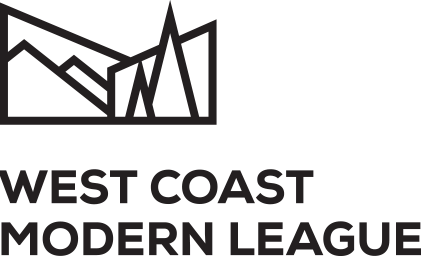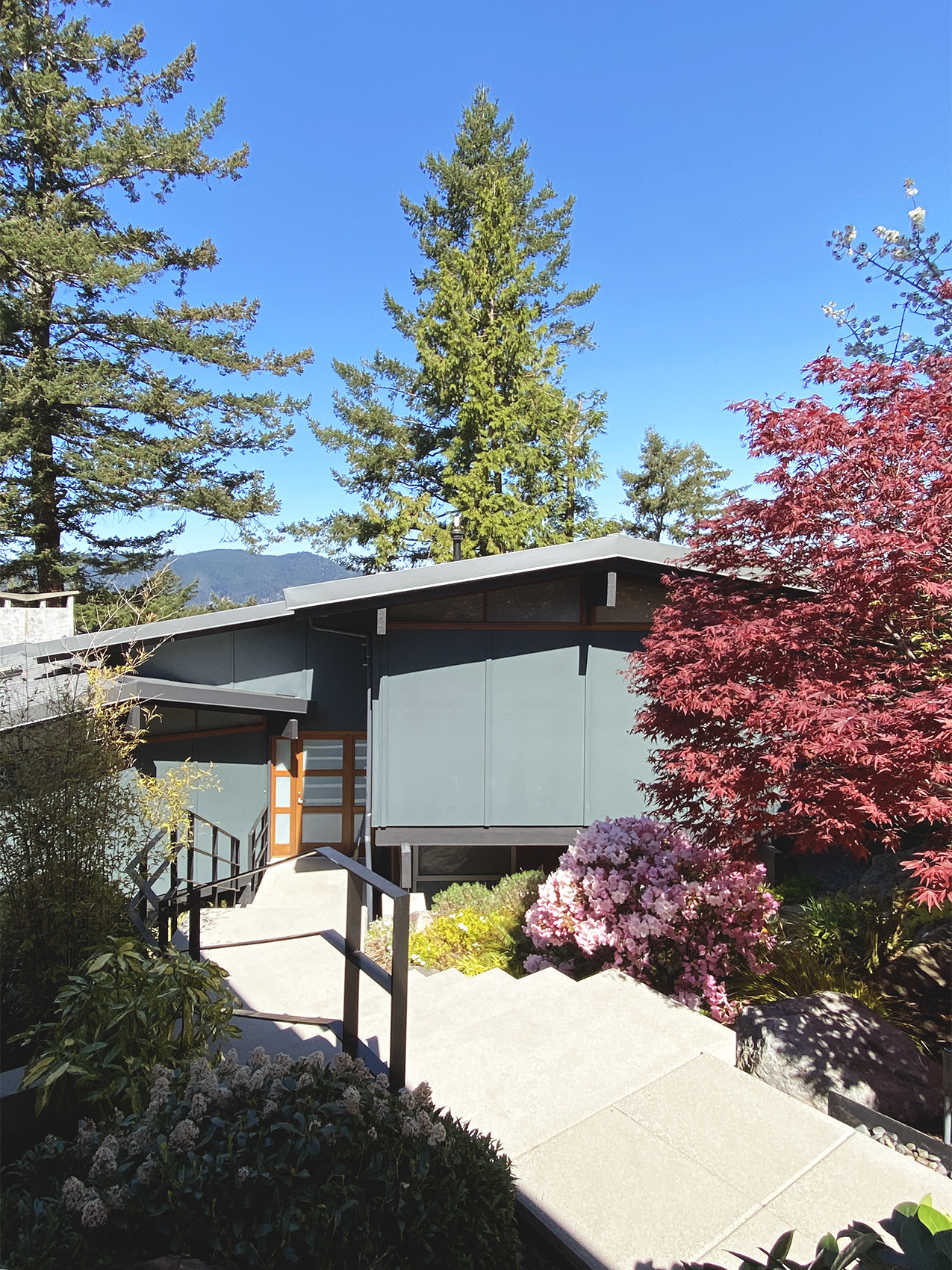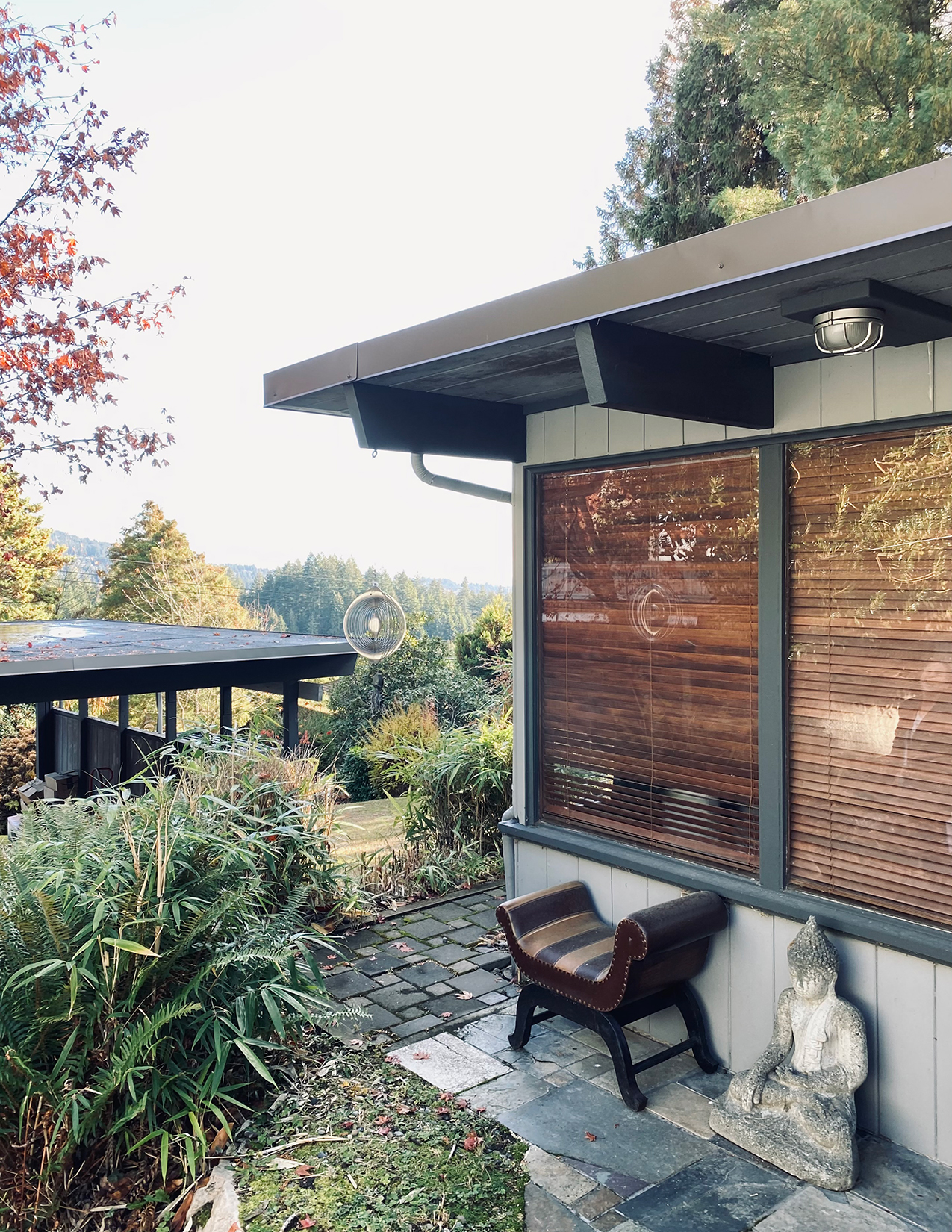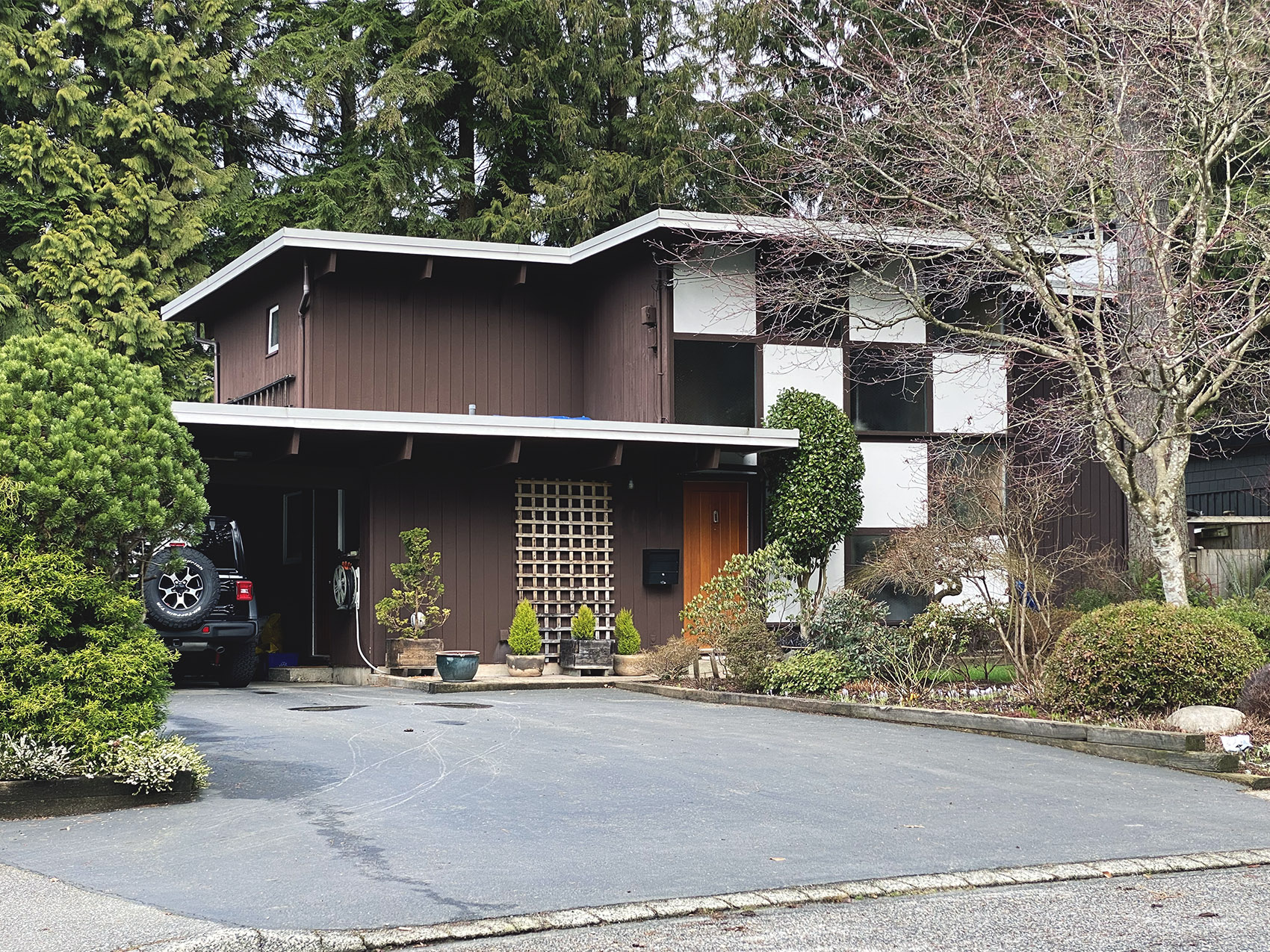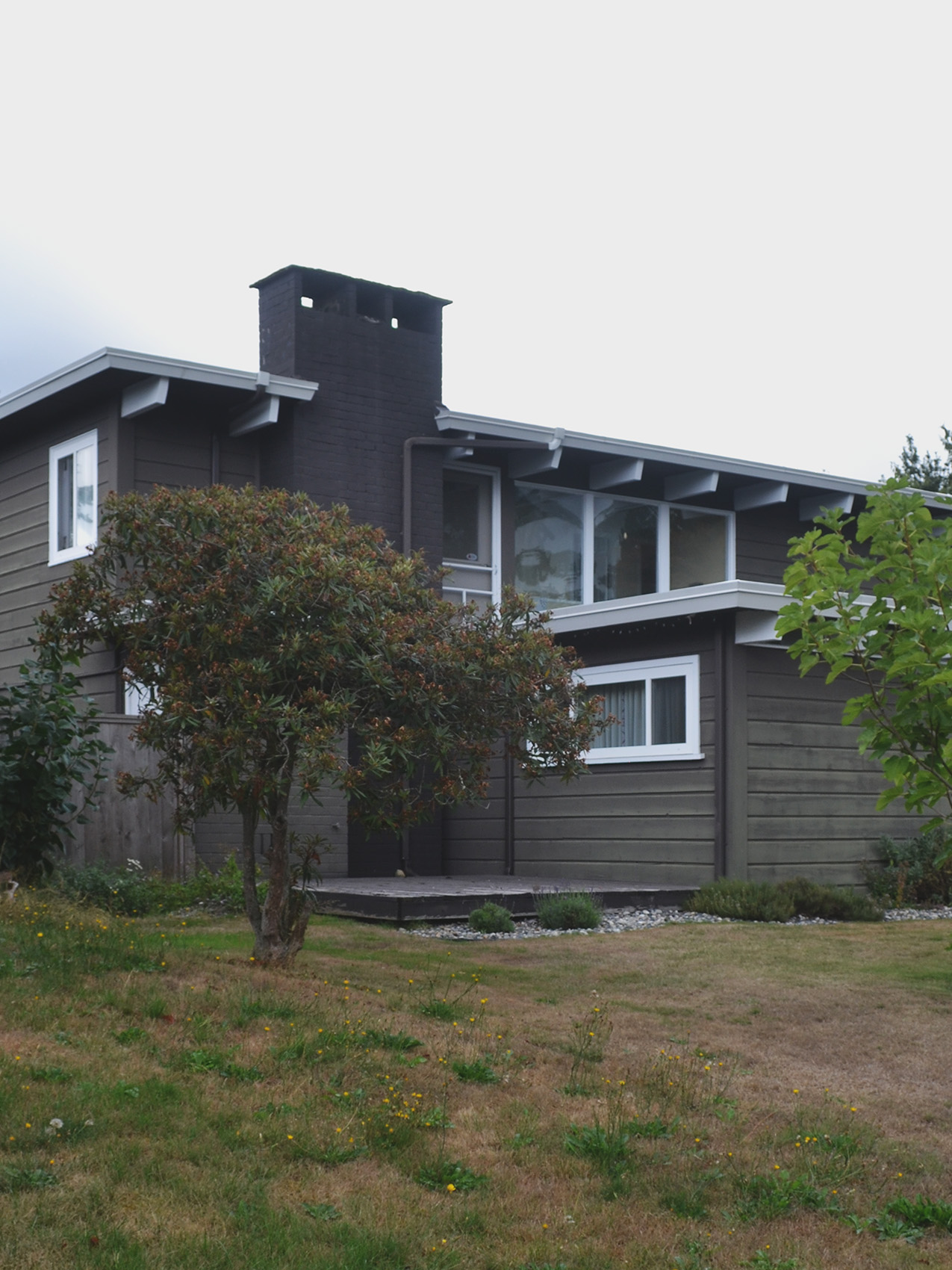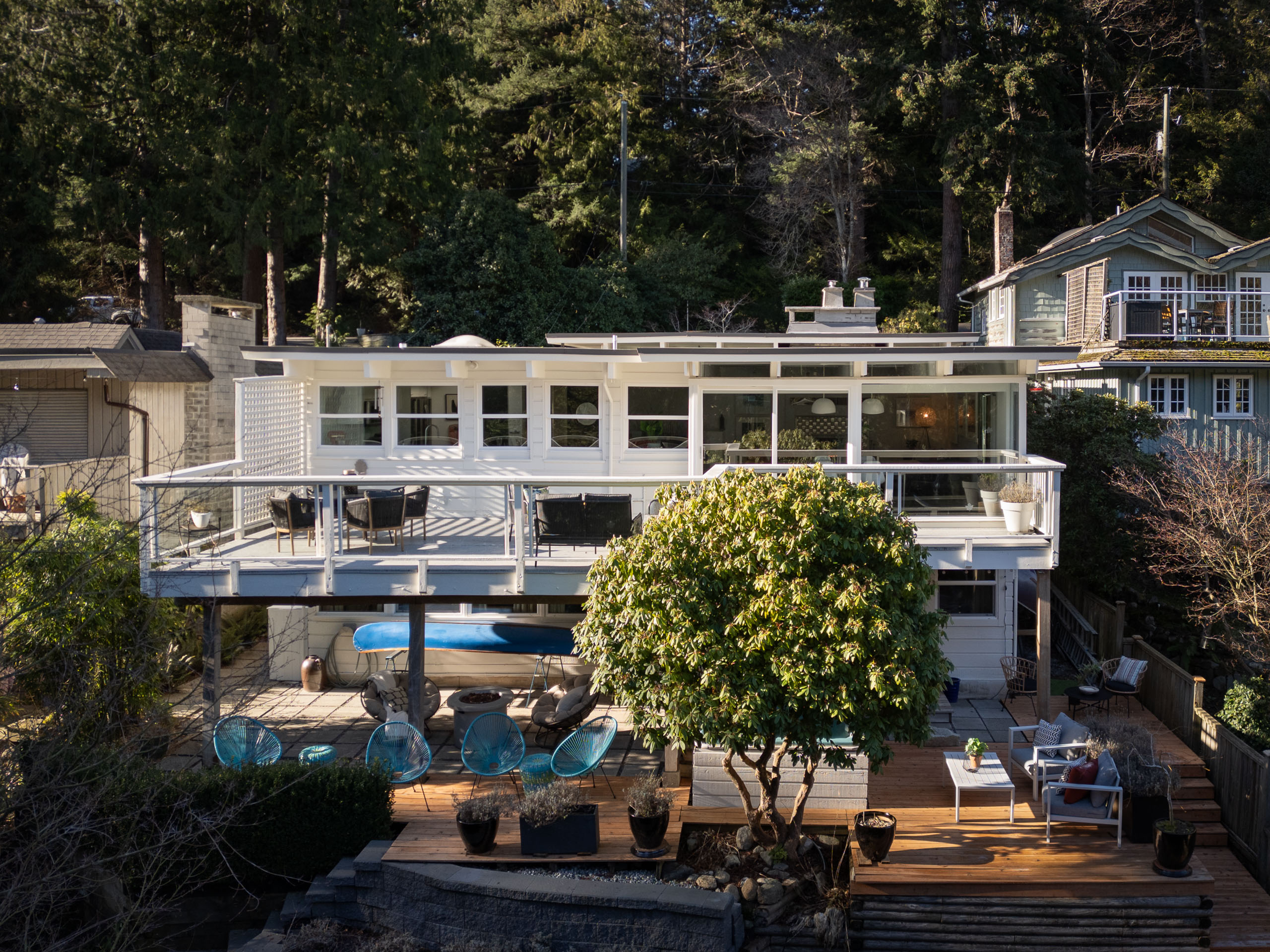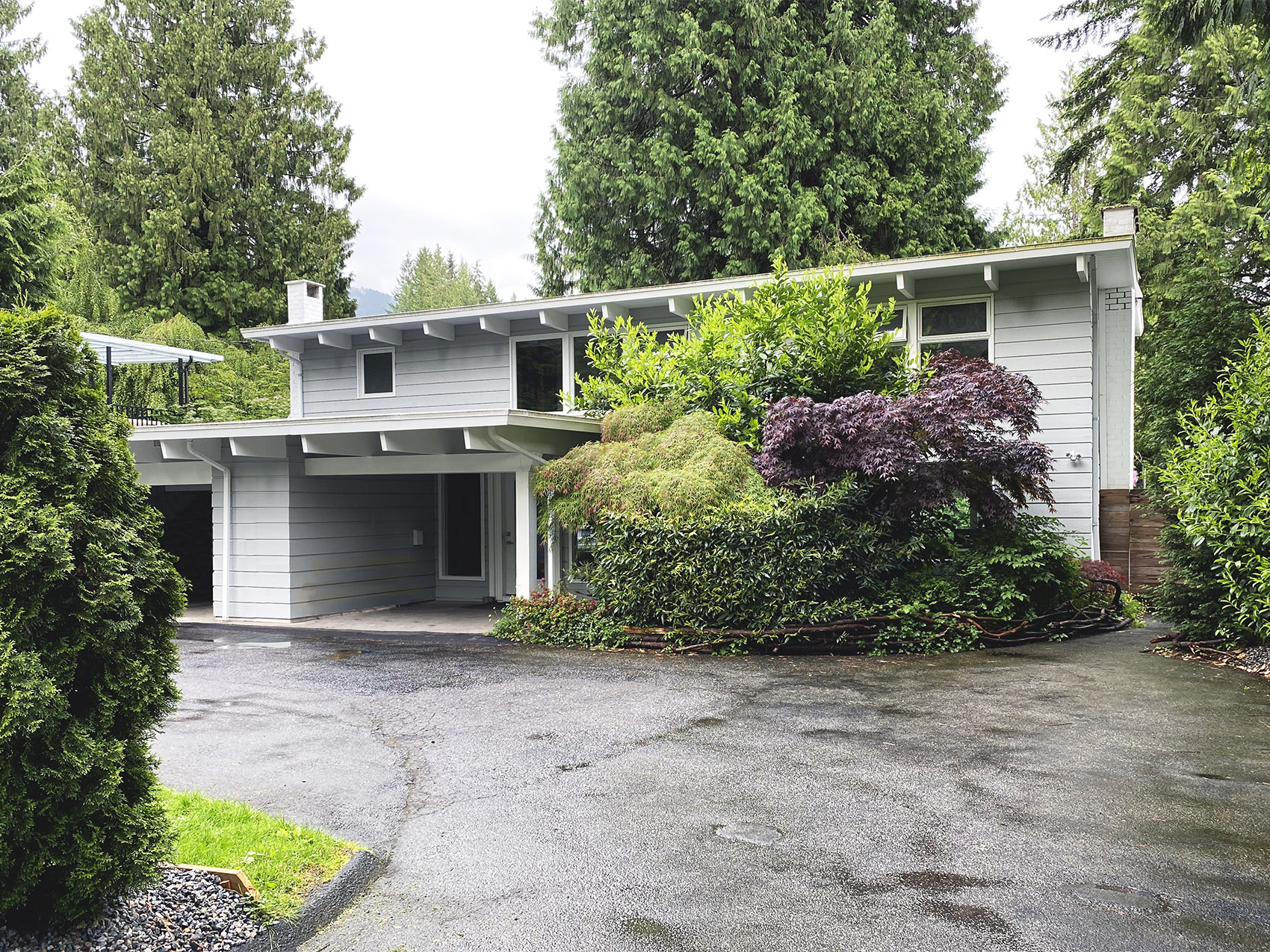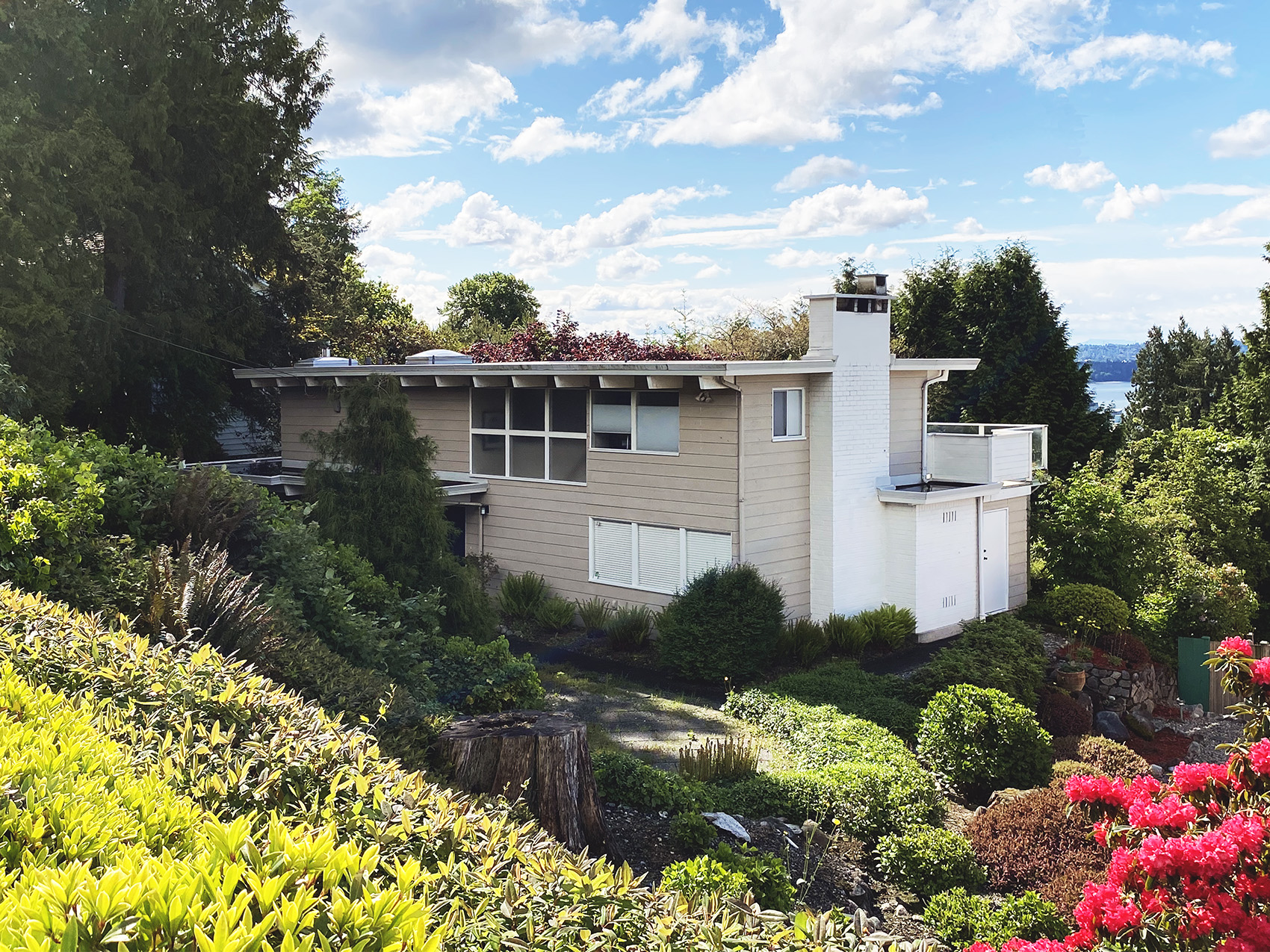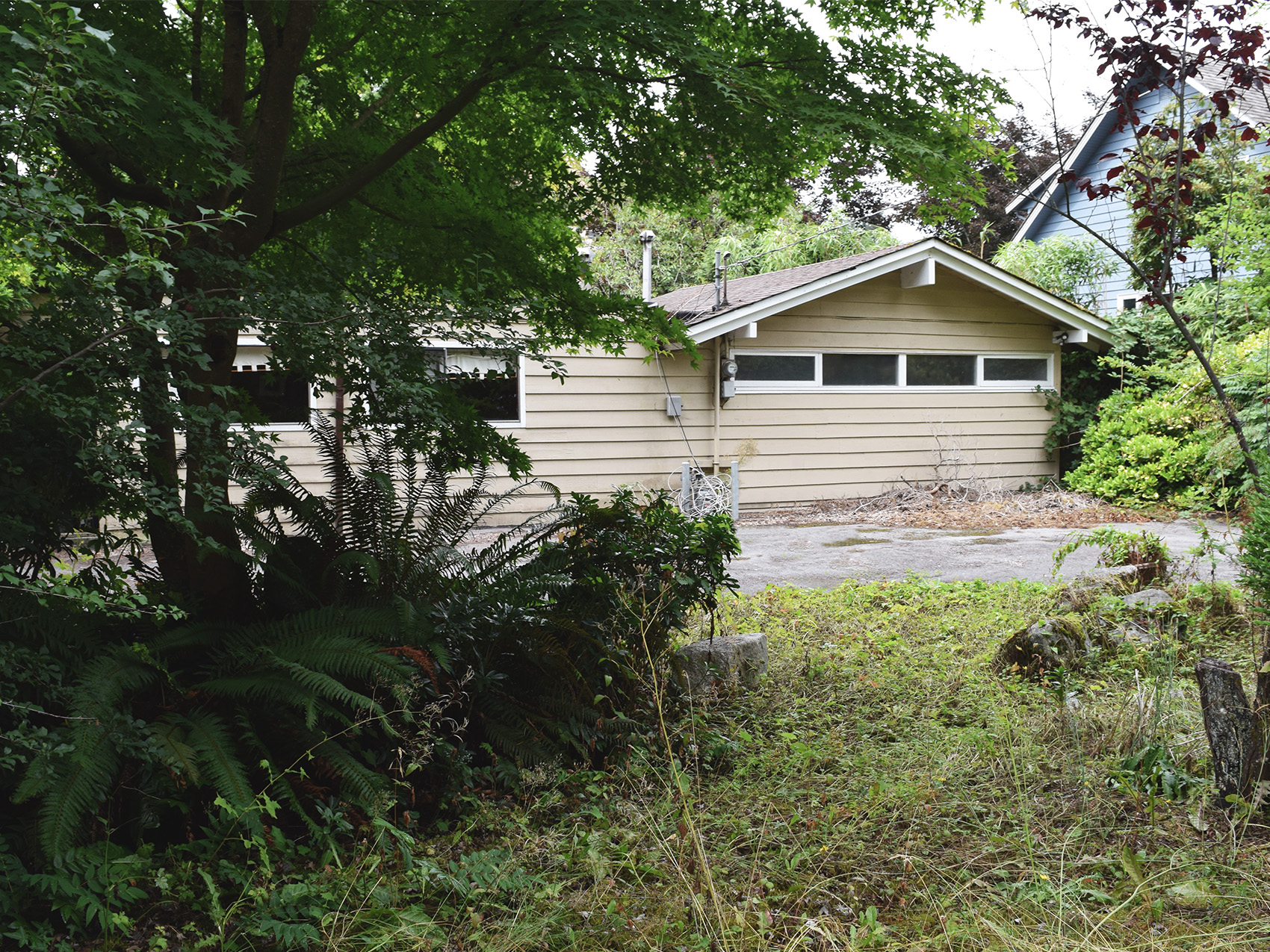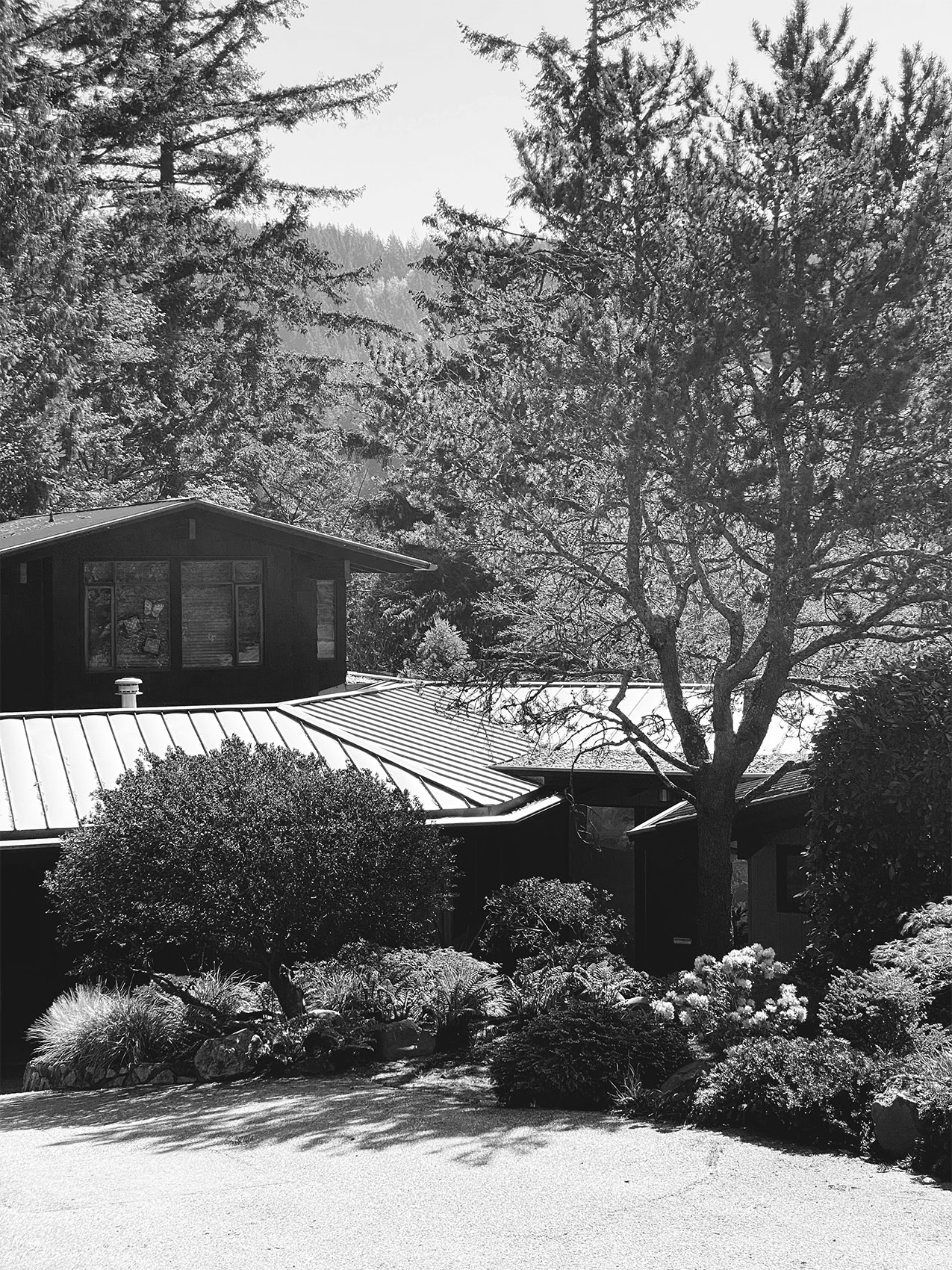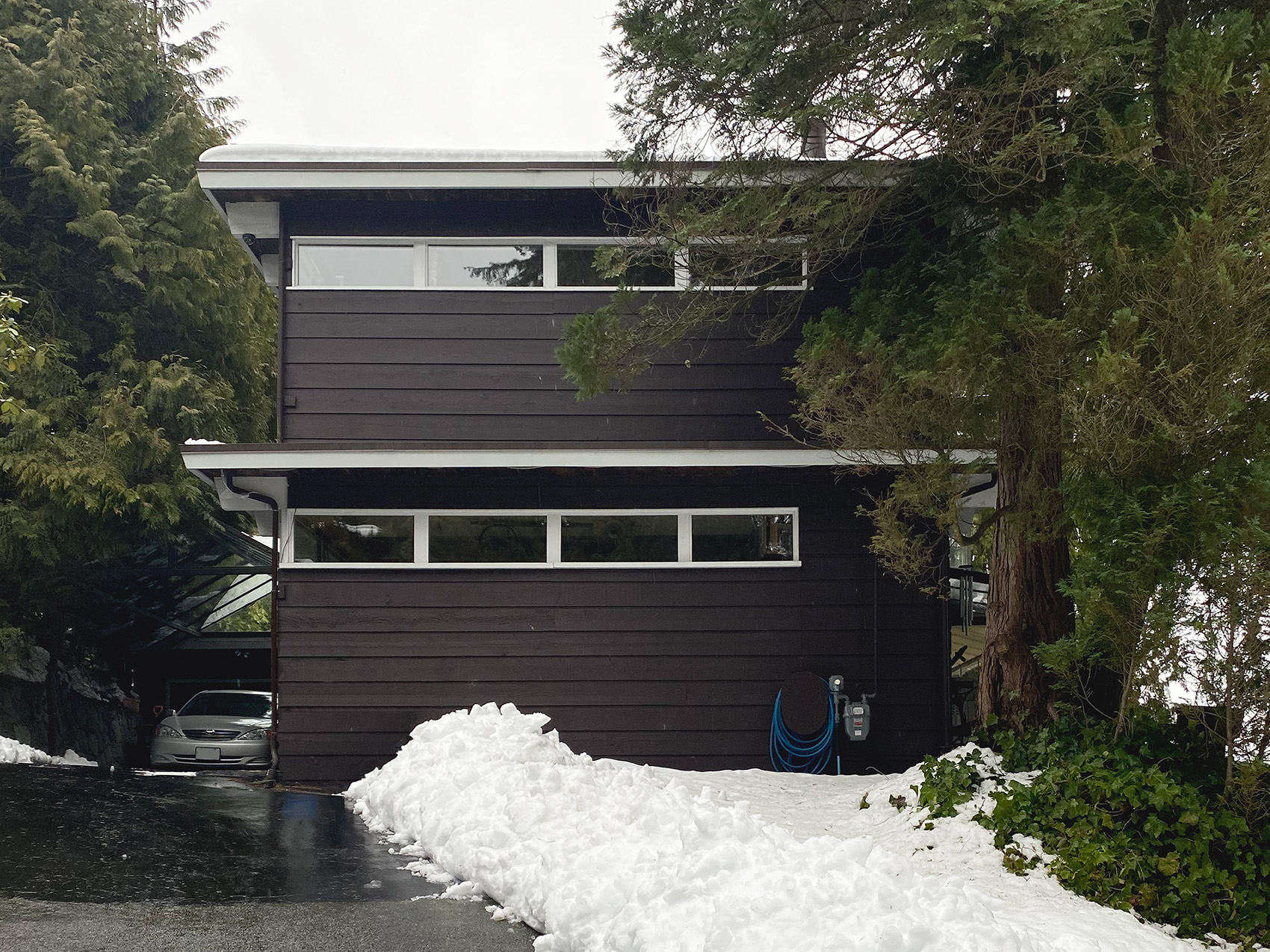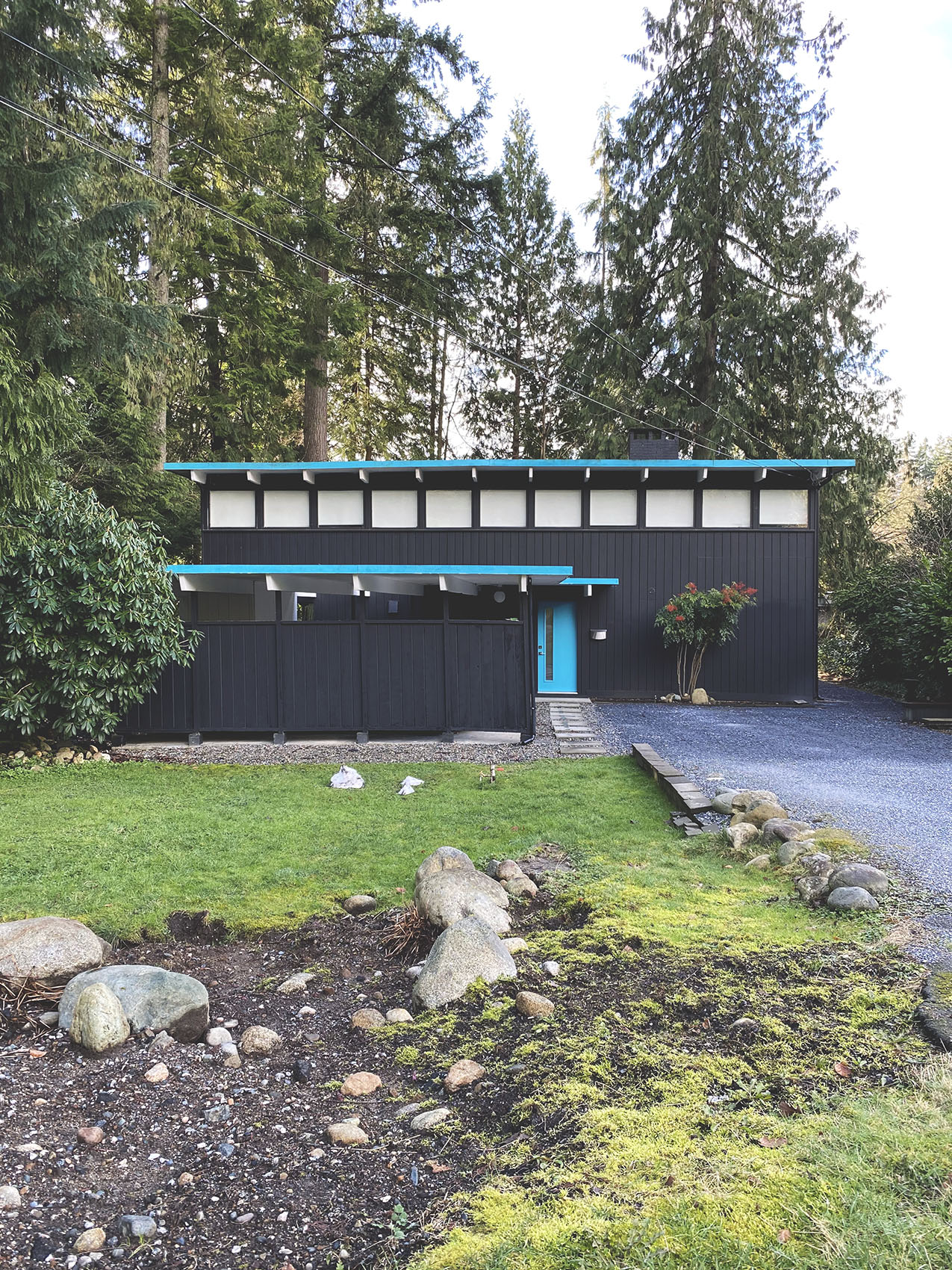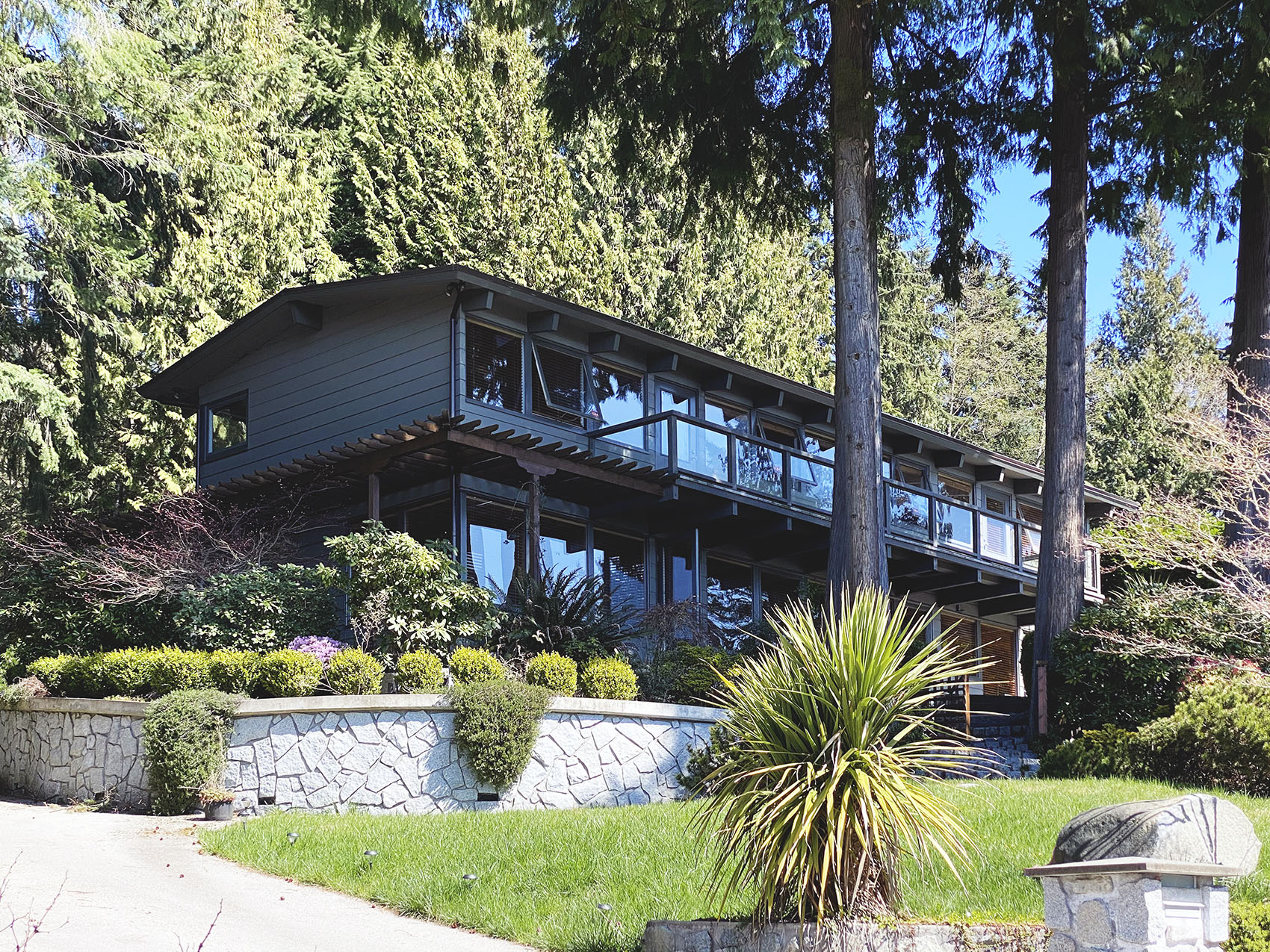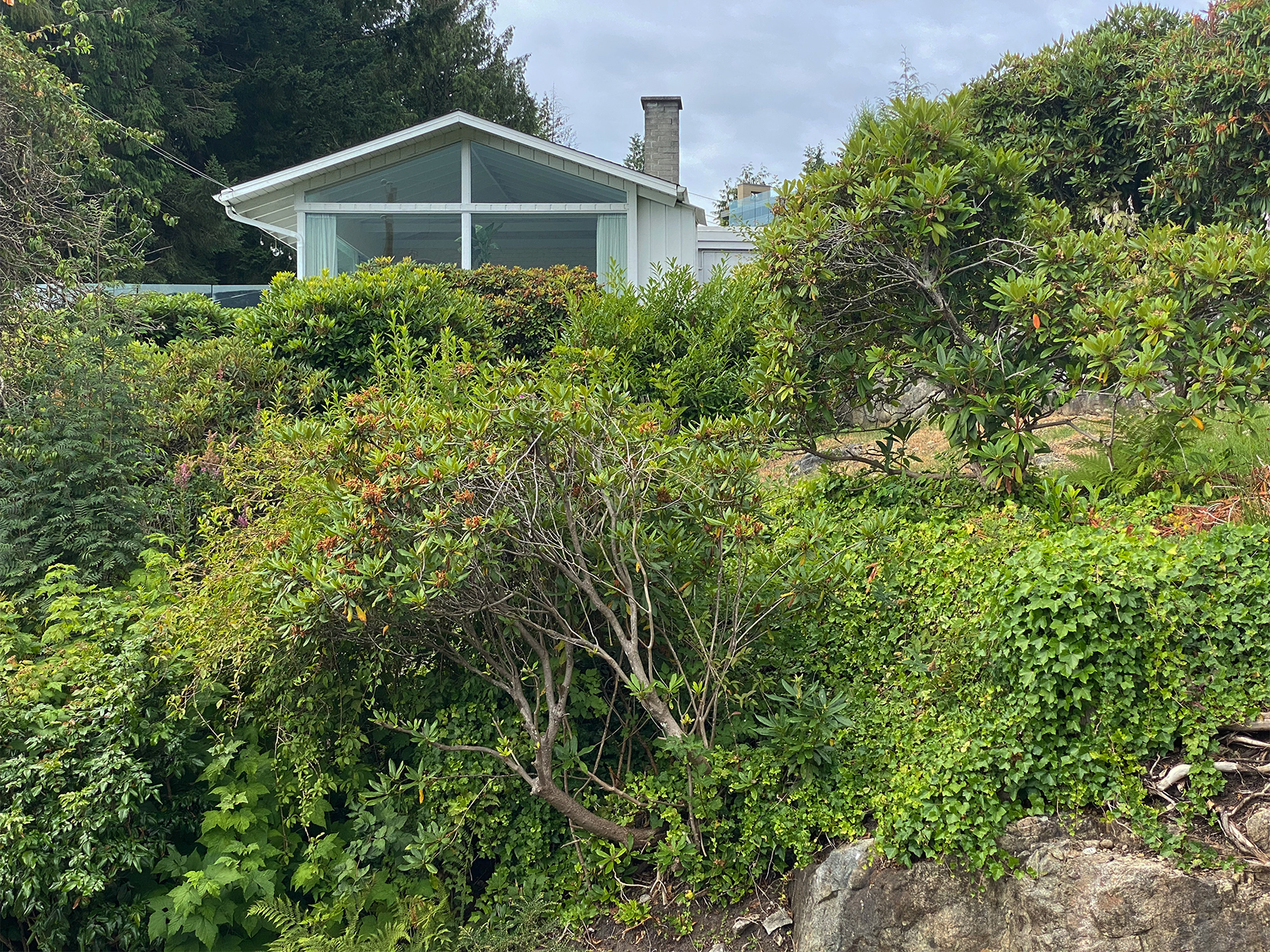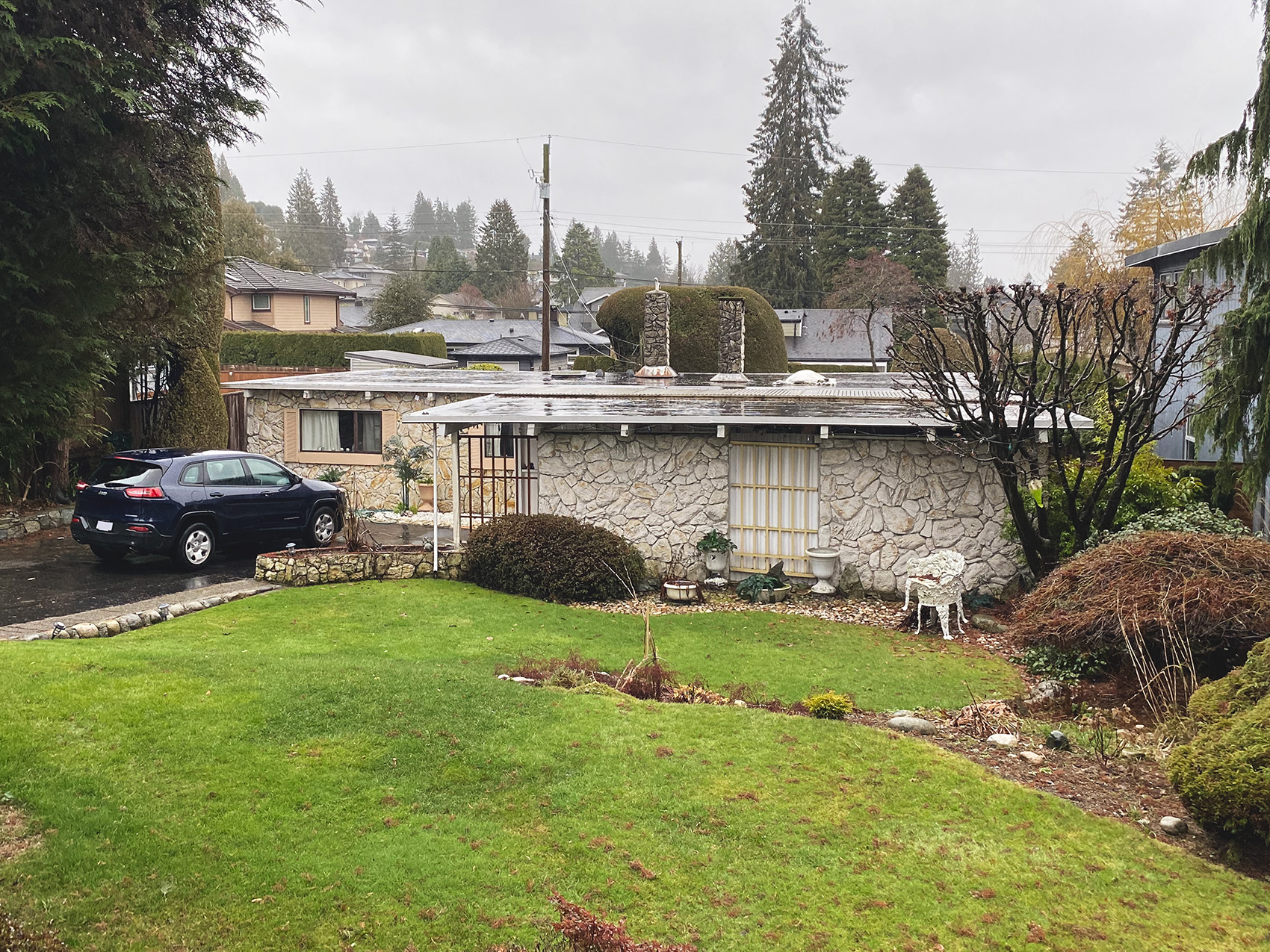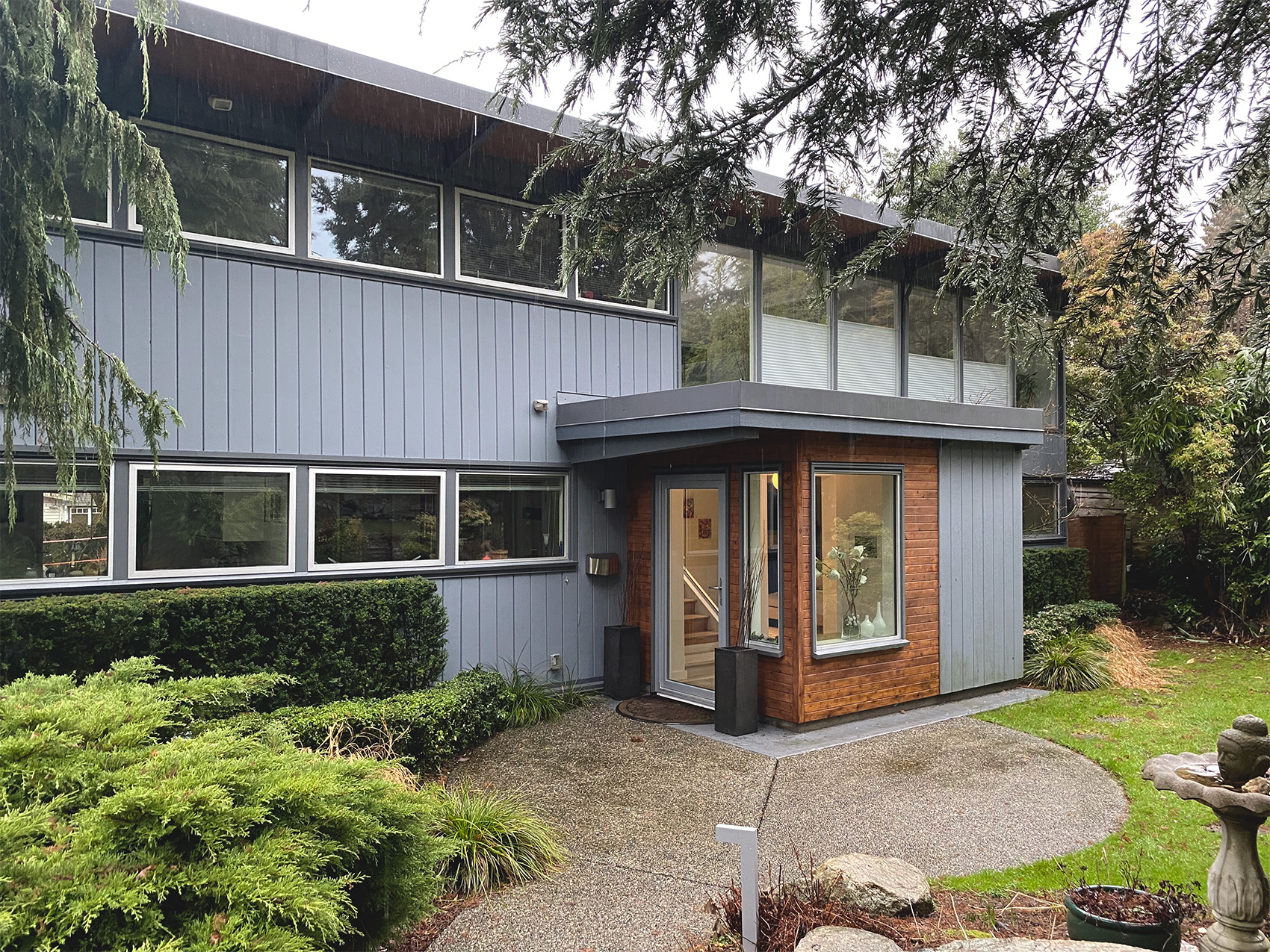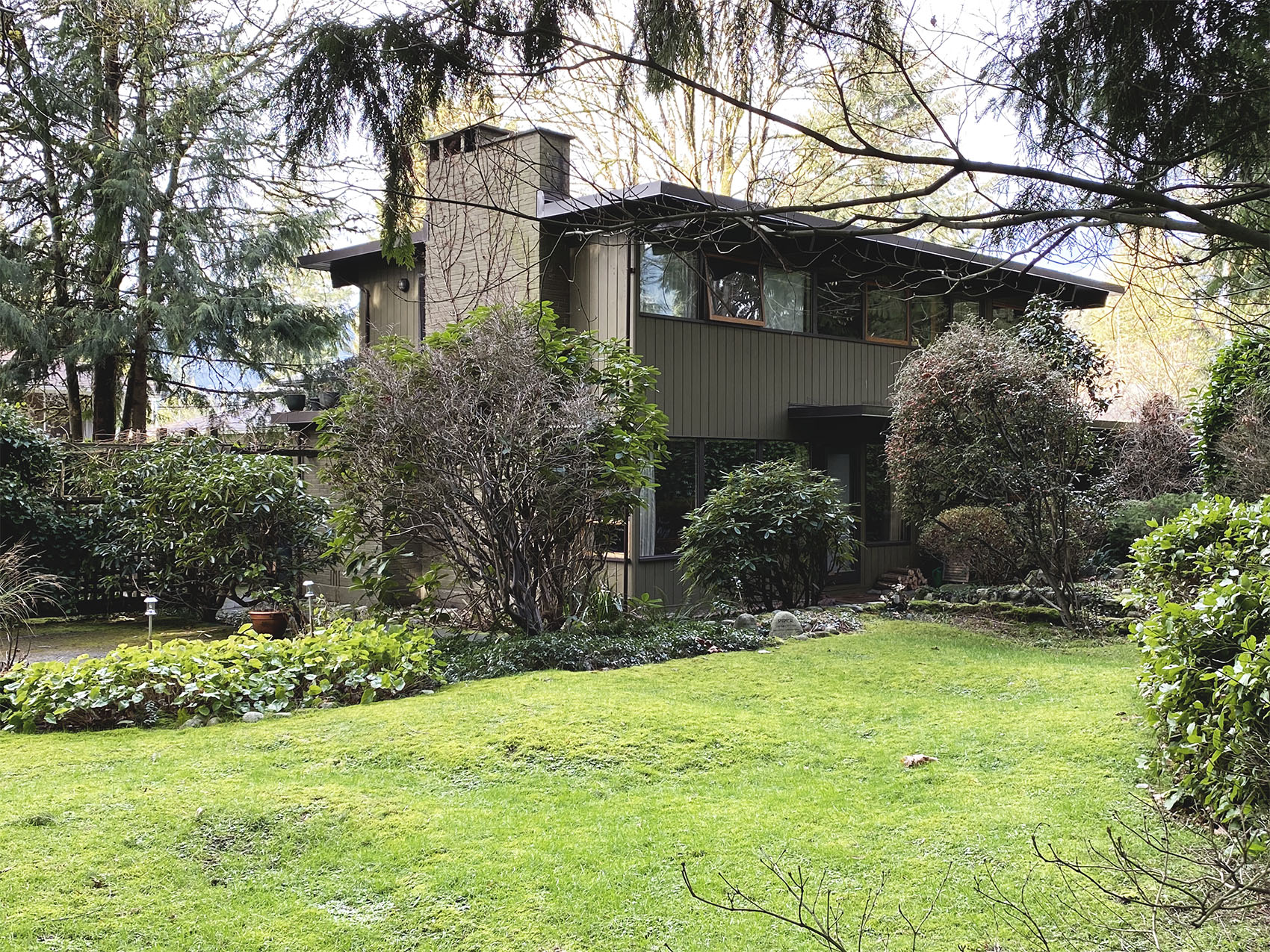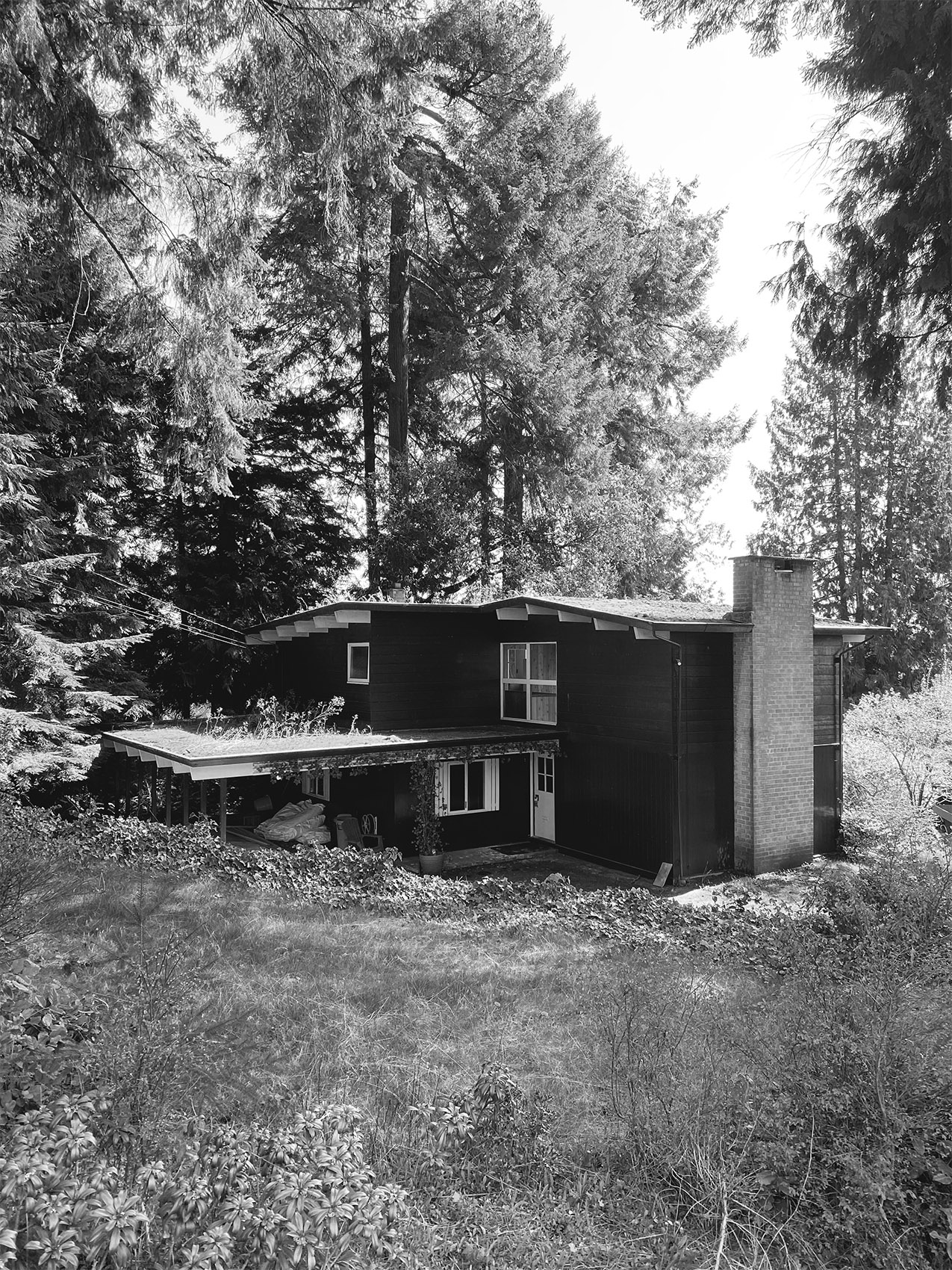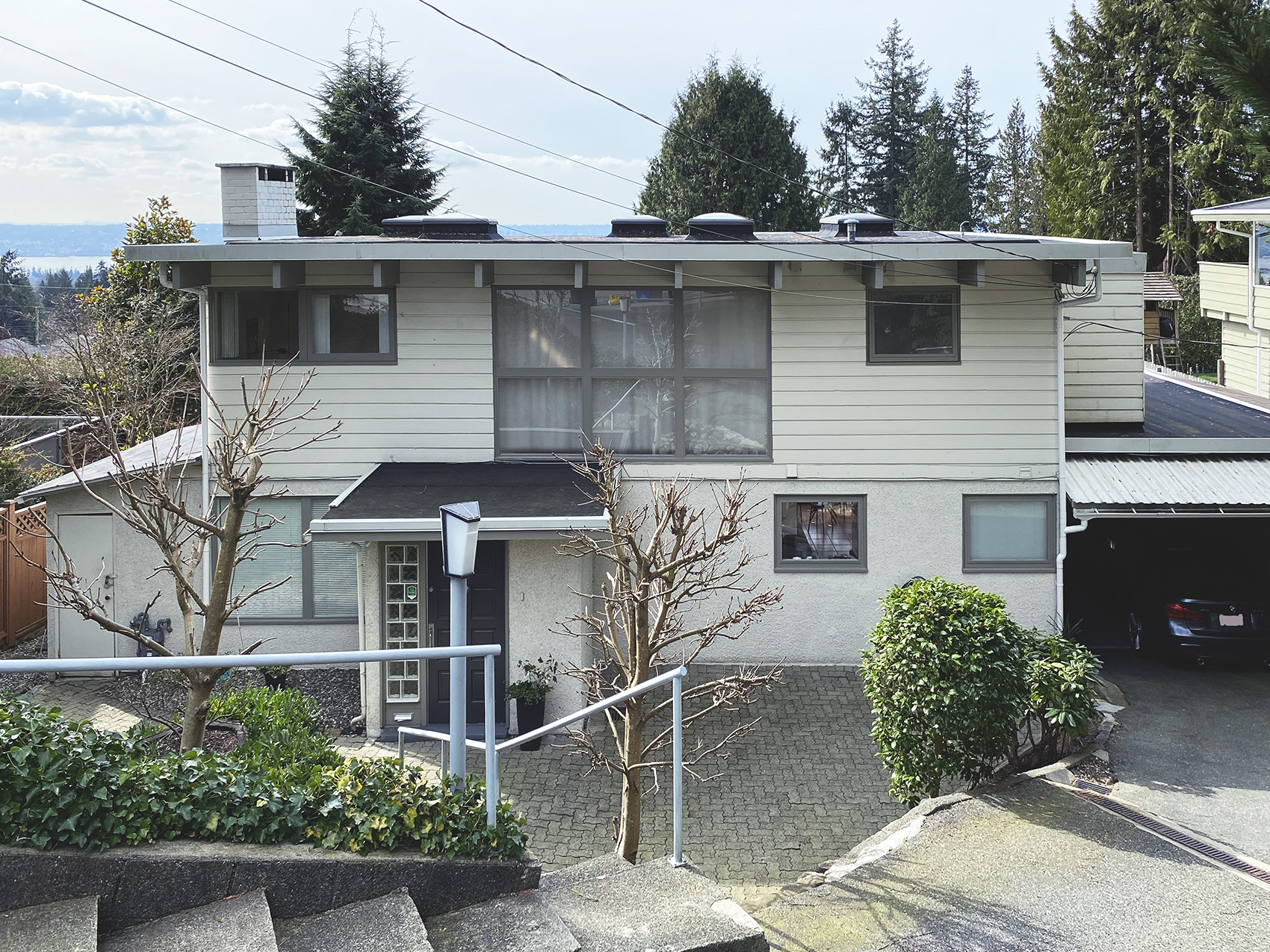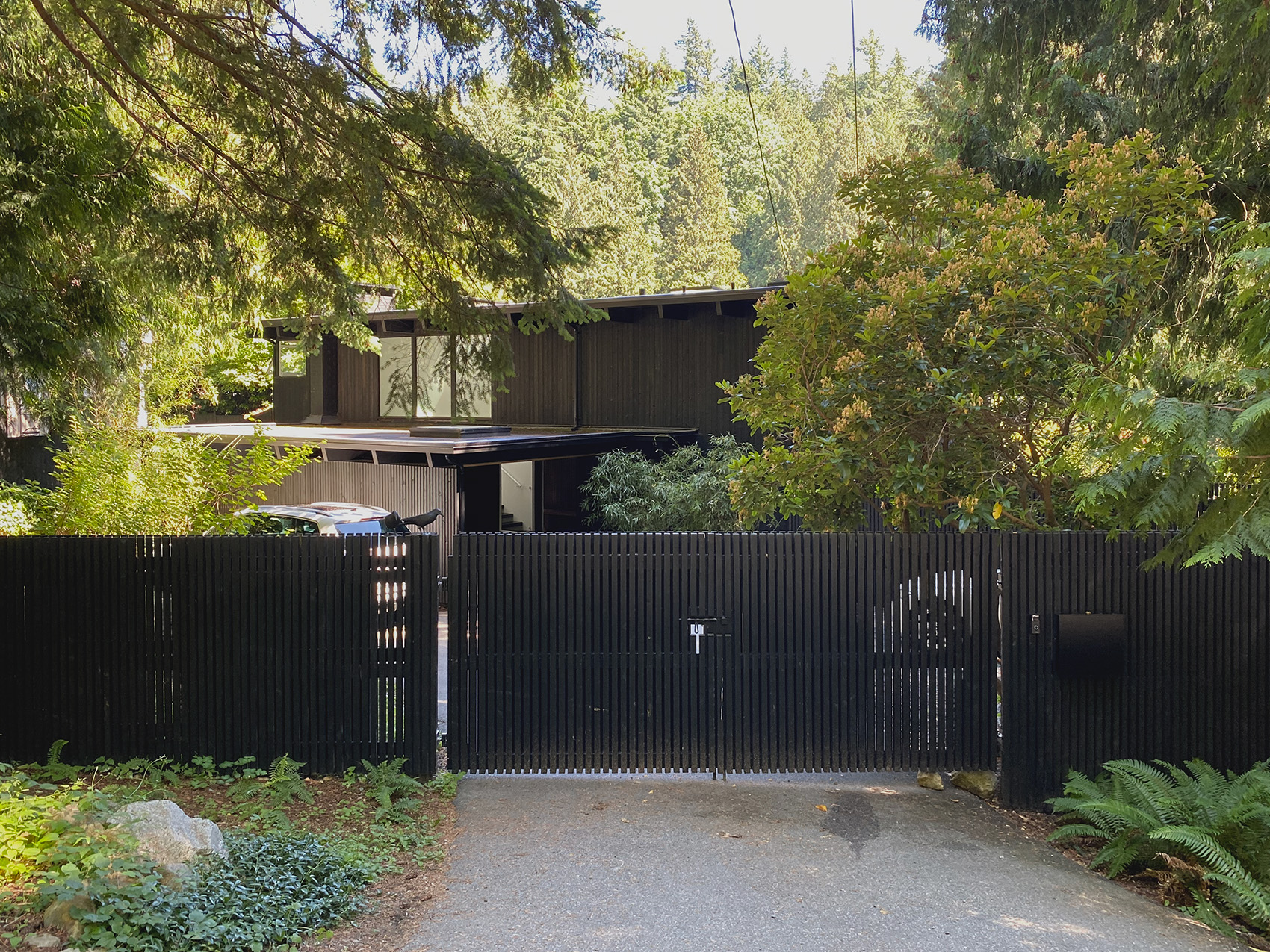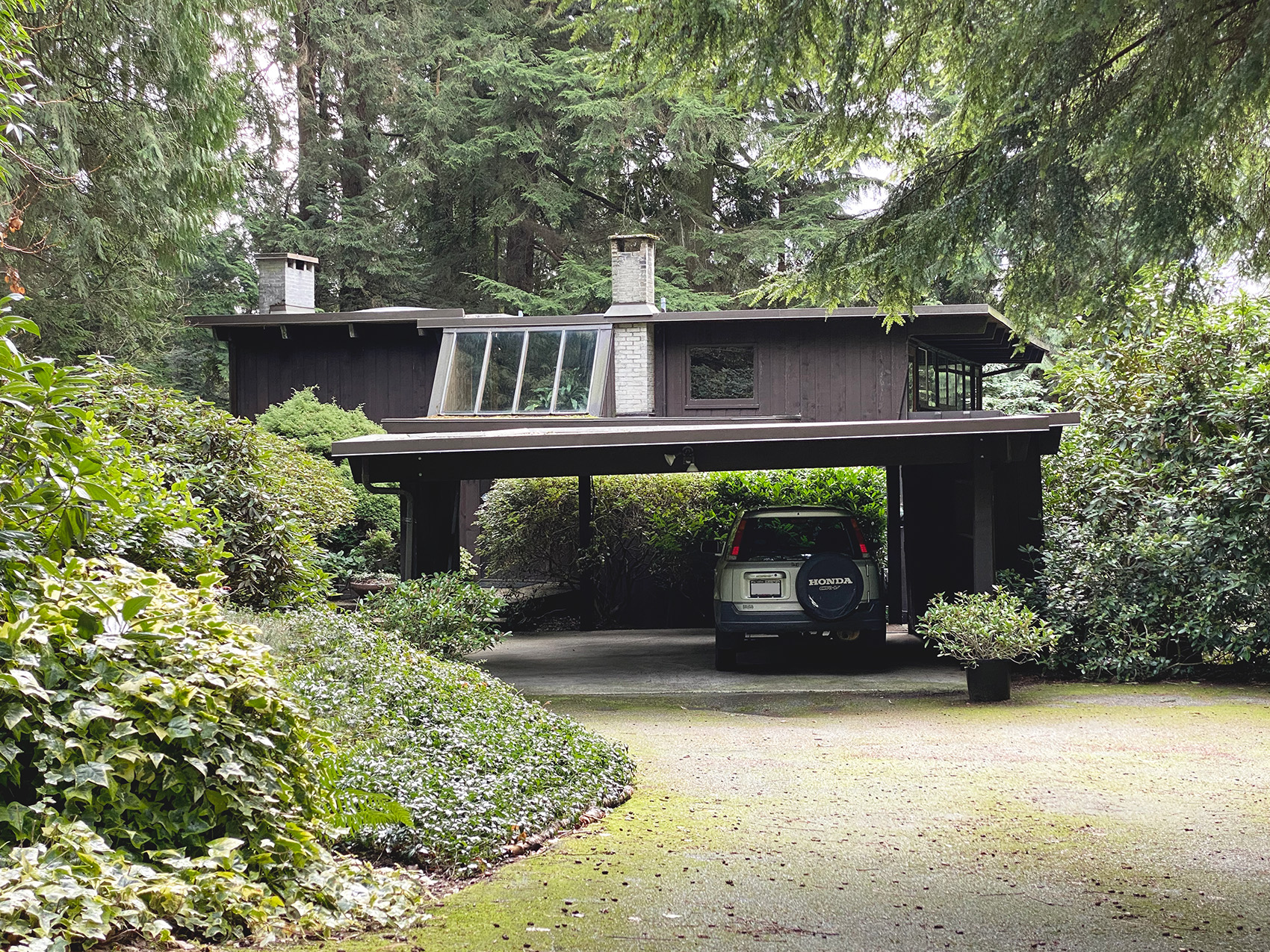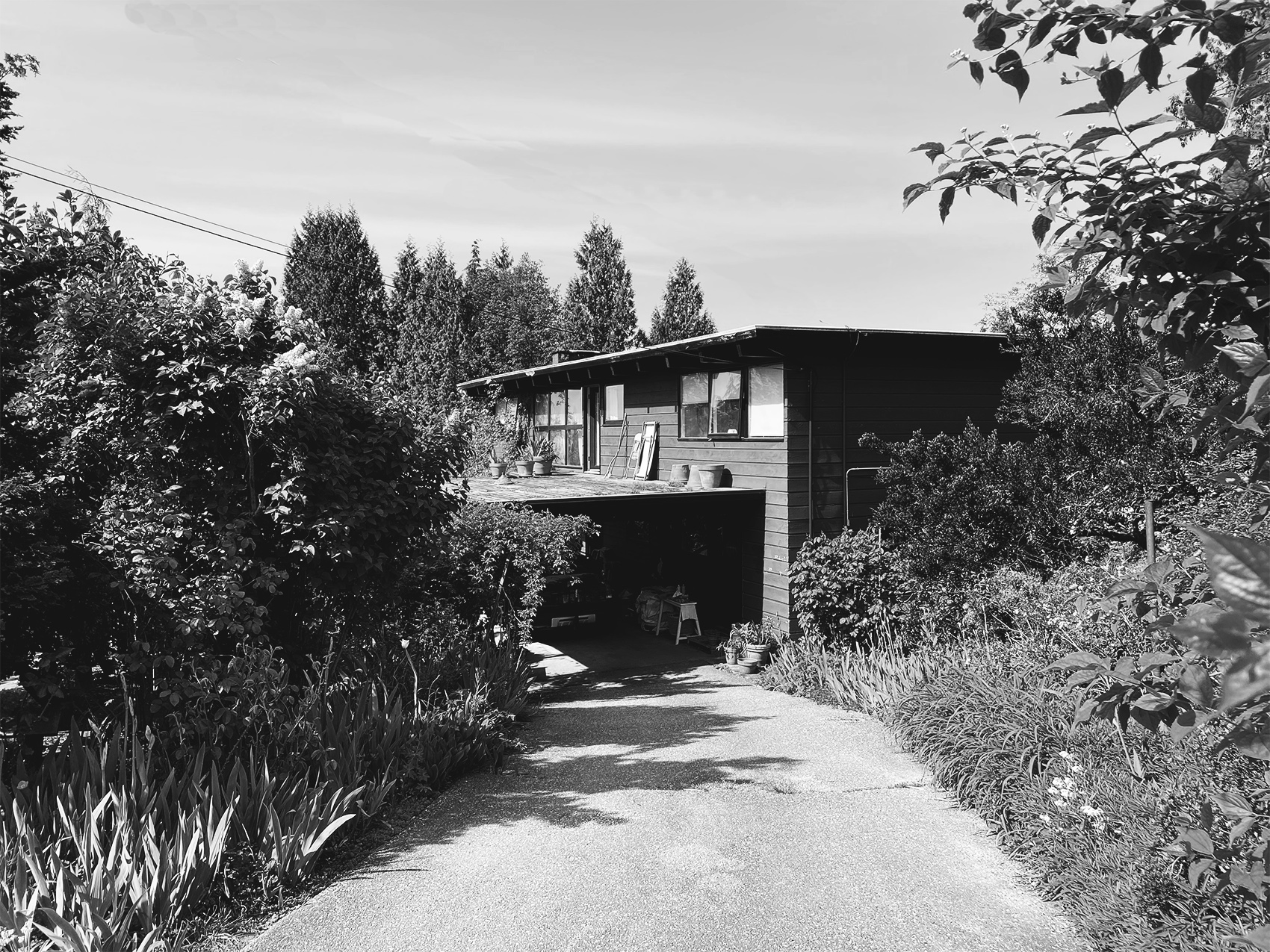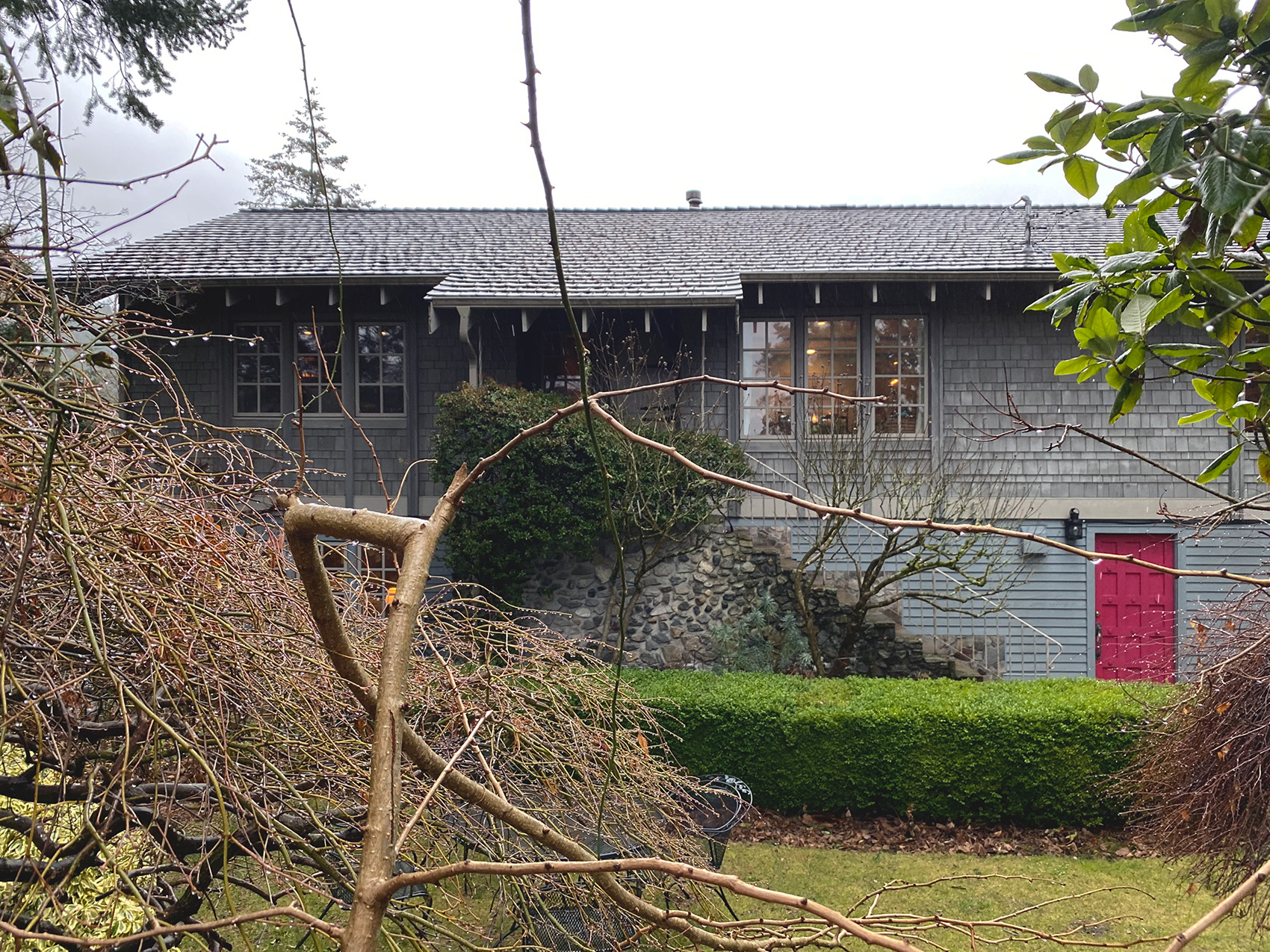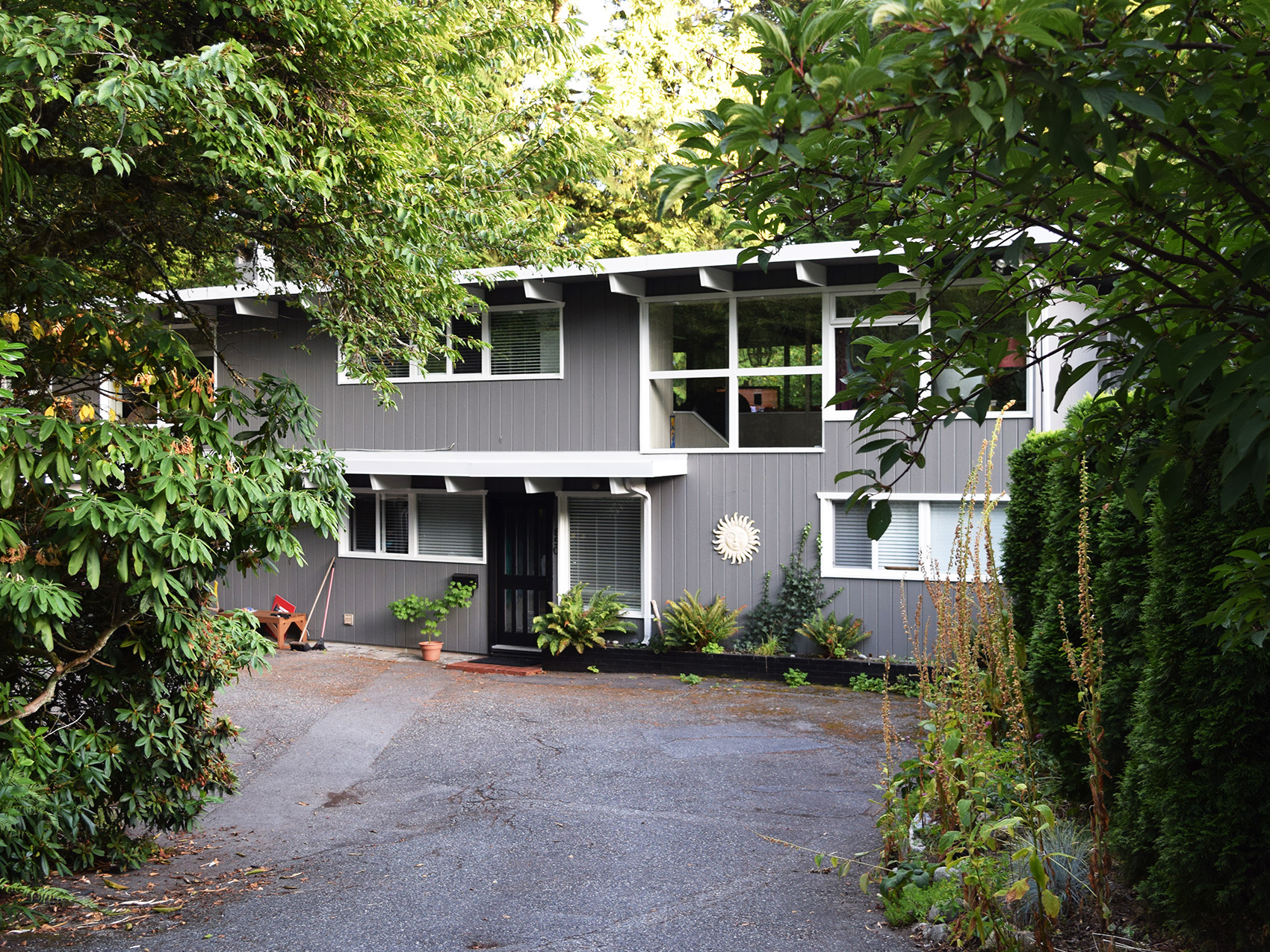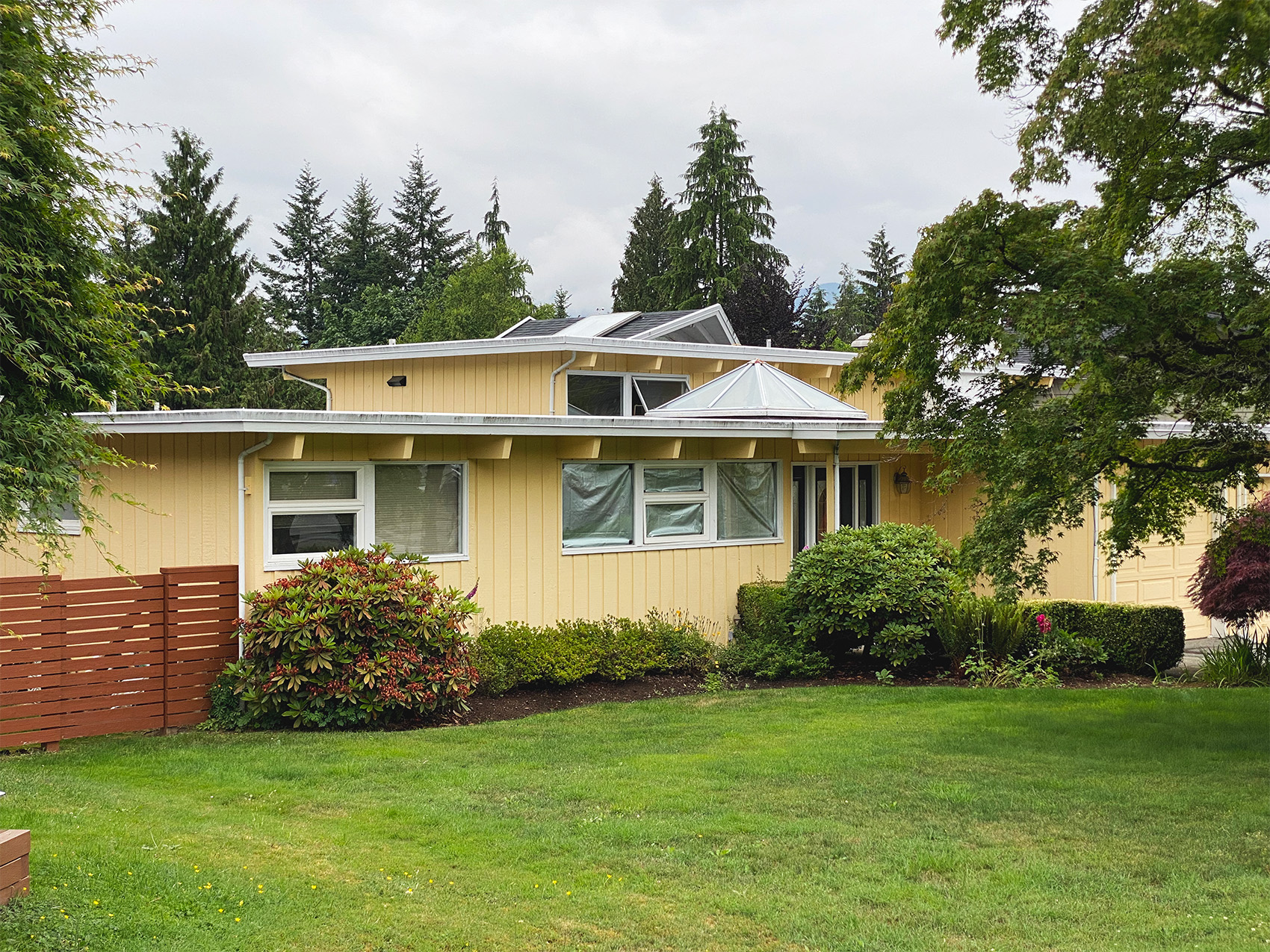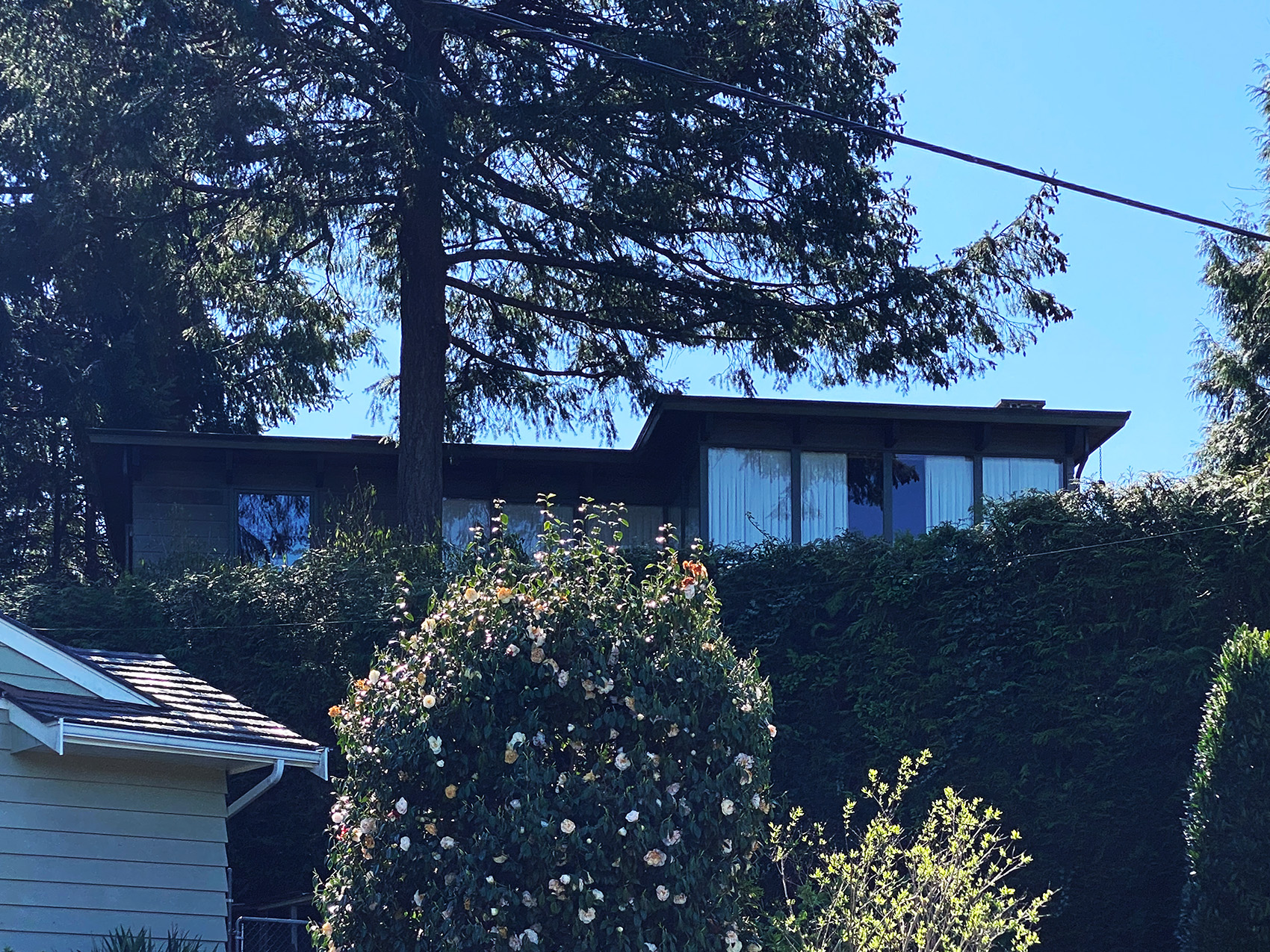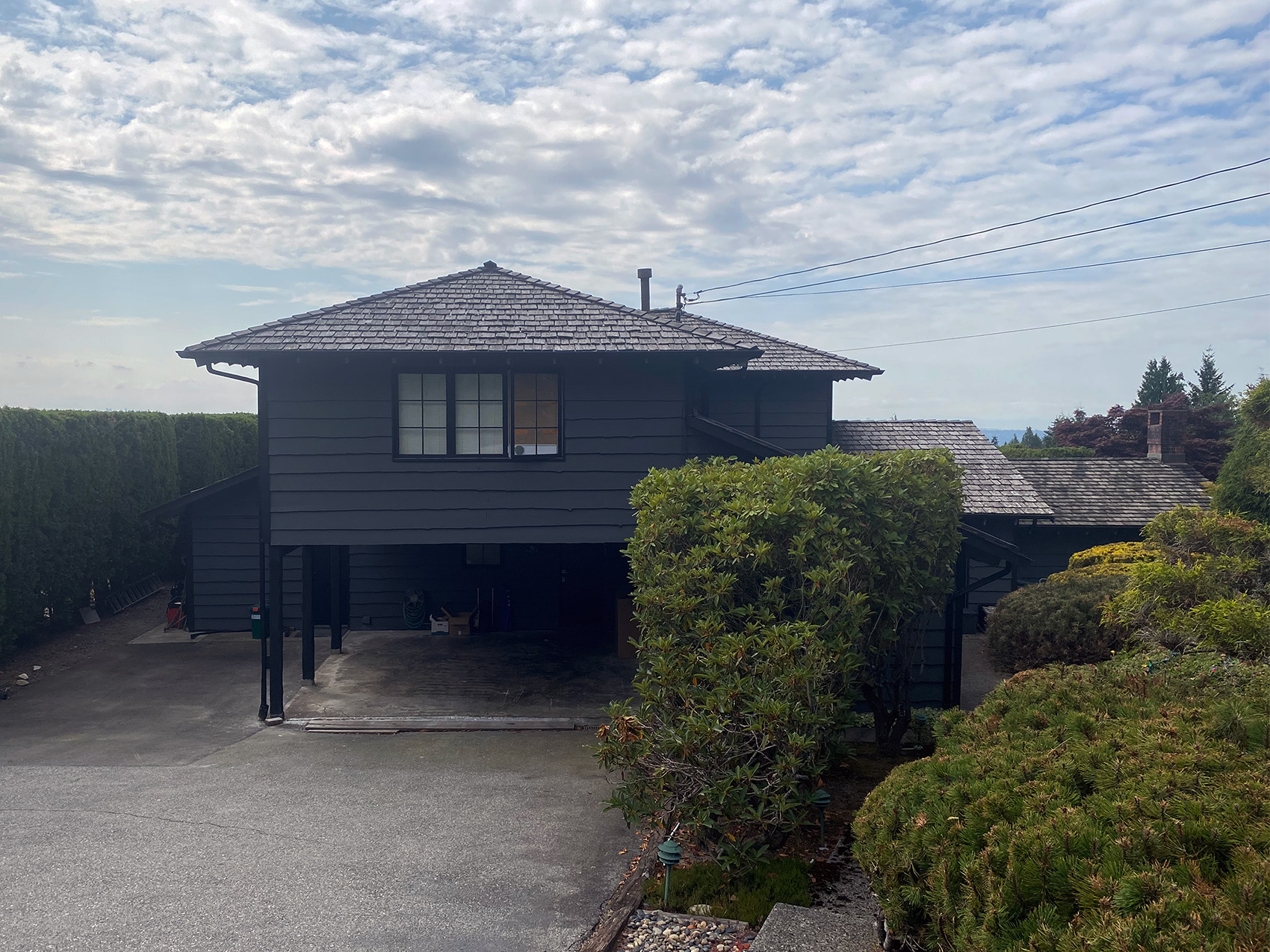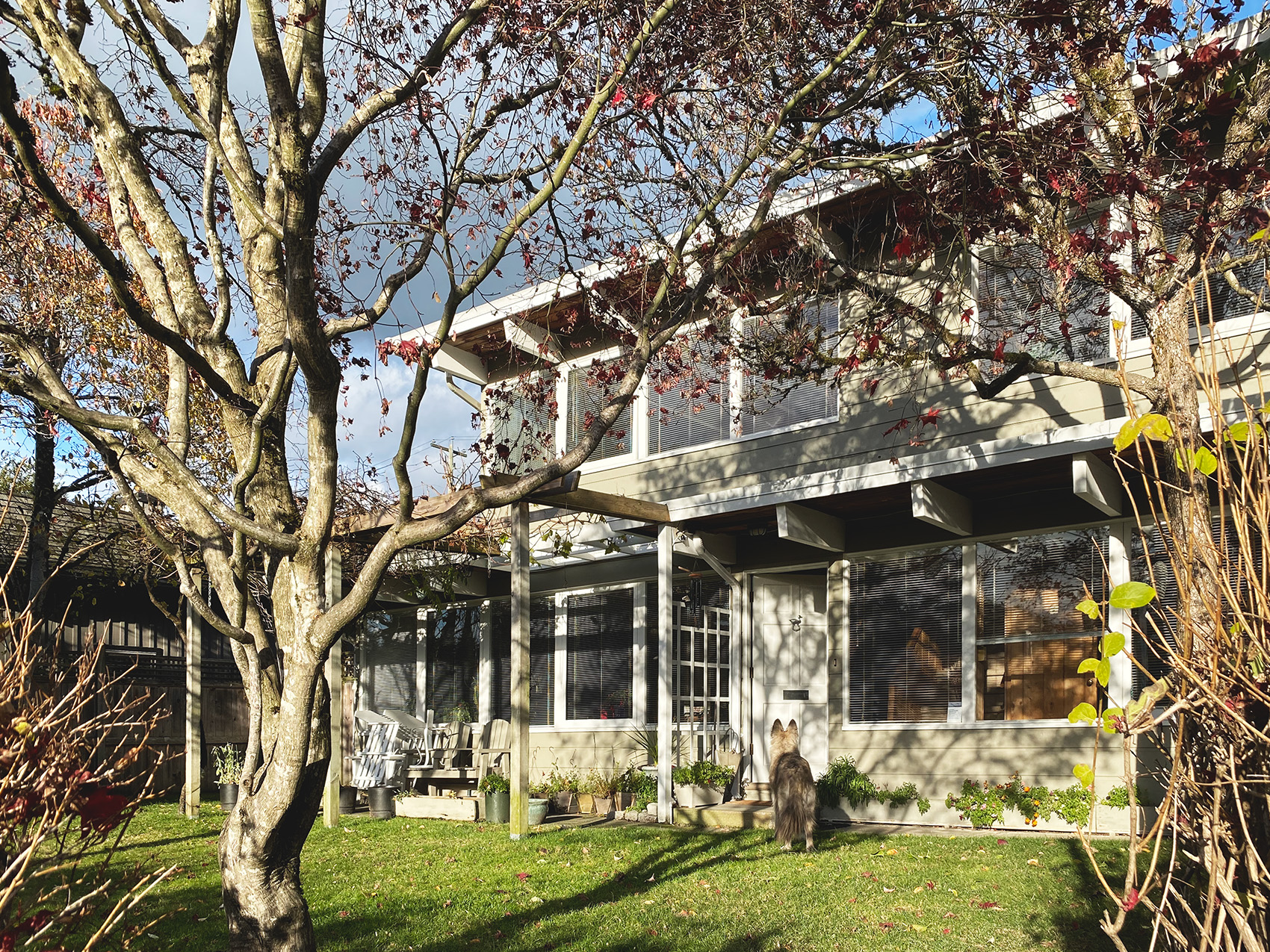Mid-Century West Coast Modern Design/Build
In the Greater Vancouver area, the name Bob Lewis is synonymous with the iconic post-and-beam building boom of the mid-20th century. Outside of the design disciplines his name is scantily known, but within architectural circles Bob Lewis has a cult following. Often revered as legendary, Bob Lewis and the design/build company he founded, Lewis Construction, was considered one of the most successful domestic builders of the post-war building boom, prolific in creating economical modern residences. At its peak, the firm is said to have been constructing upwards of 100 homes per year, most of which are still to be found across the North Shore and in some rather unexpected places. To date, the West Coast Modern League and North Shore Heritage, with their partners, have identified and catalogued some 750 homes, primarily across the southern coastal regions of British Columbia. It could be argued that, more than any other, Bob Lewis was responsible for the proliferation of the West Coast Modern movement to mainstream audiences.
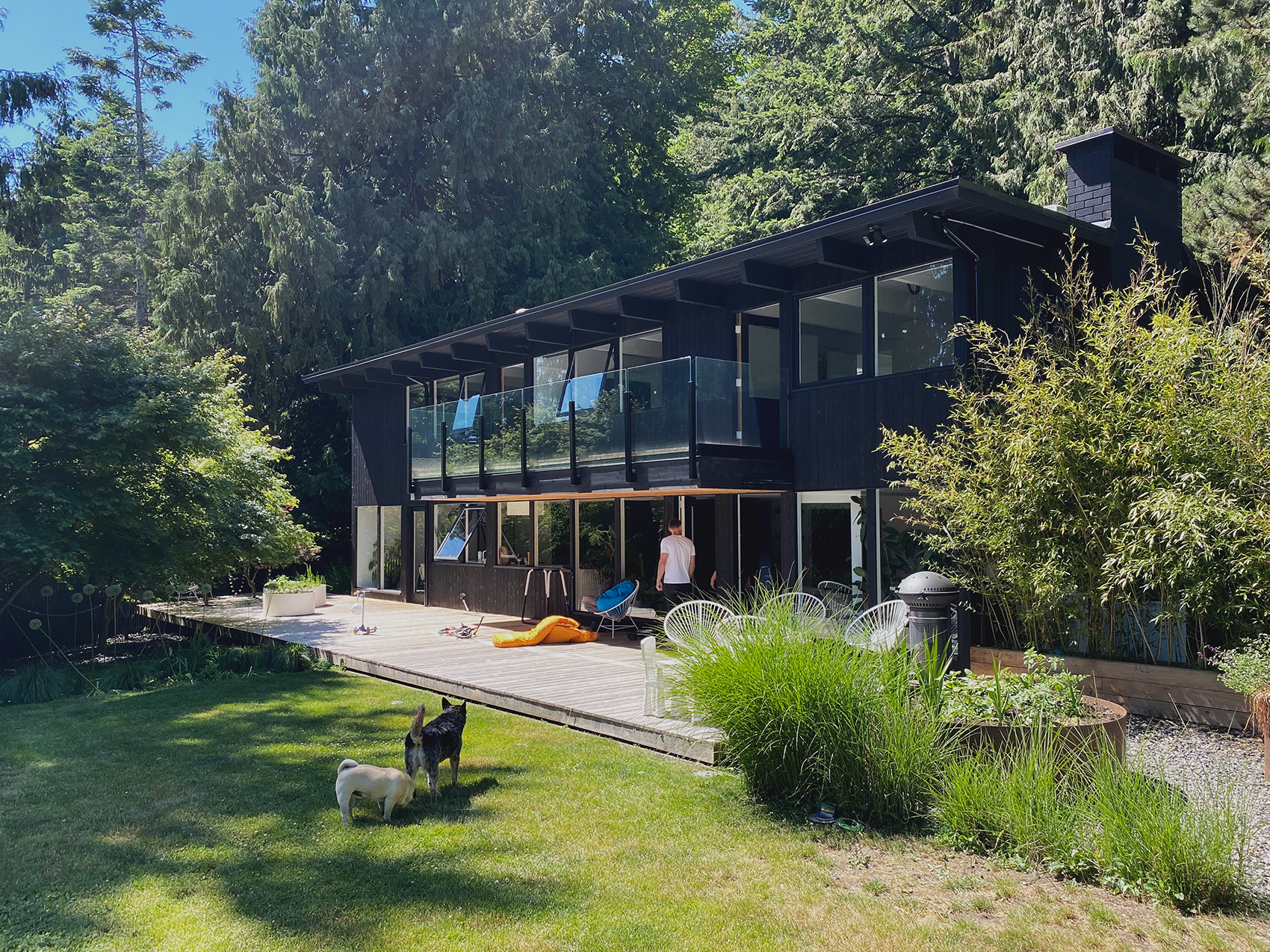
Robert Gordon Lewis was a Vancouver native, born March 21, 1917. During his later grade school years, Bob attended King Edward High School, living on West 8th Avenue in Vancouver with his mother Stella and sister Audrey. In 1937, following graduation, he took up a position as a cleaner at Vancouver General Hospital, later being promoted to an orderly. During this time, after having courted through high school, Bob Lewis and Evelyn Loretta married on August 28, 1938. They would eventually raise three children: Peter, Bonnie, and Sherry. By 1943, with war raging across Europe, Lewis turned to the war effort, leaving Vancouver General Hospital for the Burrard Dry Dock in North Vancouver to work as a welder and shipyard worker. Following the war, in 1946, records show his profession listed as a carpenter, then a builder in 1950, signalling a transition in his career trajectory towards the work that would eventually define his legacy on the built environment of Canada’s west coast. Lewis Construction would be founded in 1954.[1]
“Glue-laminated, and other prefabricated products are too sophisticated. What people really like, and are longing for, is a solid chunk of sawn lumber left natural. They do not mind the twisting and checking as long as the desire for warmth and charm of wood is satisfied.”
Lewis post-and-beam homes, like houses of the West Coast Modernist idiom, were designed to be economical, adapted to families, to use local natural materials, and to provide for modern living with an intimate connection to nature. The Greater Vancouver region was amongst the first to see houses built in this residential post-and-beam construction method, an image synonymous with mid-century architecture on the steep, rocky slopes of the North Shore. The flexibility of this structural system also lent itself well to building on what had previously been considered treacherous, unbuildable terrain. As such, this construction method quickly became, and continues to be, part of the lexicon of West Coast Modernism, used in thousands of buildings across British Columbia to this day. While the totality of his body of work is far from homogenous, Bob Lewis is most recognized for his use of this economical post-and-beam typology. An adaptation of the long-used heavy timber construction type, and the original plank-and-beam construction method of 1930s America, post-and-beam was influenced by the architectural impulse to express and lighten the integral structure of the building. In residential architecture, this consisted of an array of beams, at the floor and roof assemblies, supported by posts at perimeter and midspan, with tongue-and-groove planking spanning beam-to-beam to create a structural diaphragm. Rigid connections between the post and beam and/or solid sections of wall would take care of lateral bracing. This meant that the walls throughout the home were non-load bearing, advantageous in the mild west coast climate with the impetus to install large sections of glass. With the capacity to be utilized on steep, “unbuildable” sites, to allow for space planning that could be flexible and adaptable for growing families over time, and less costly than conventional construction, this was the system that would enable Bob Lewis to realize his vision for an accessible, middle-class, modern domestic architecture.[2]
Of the architectural thinking of the period, a Vancouver architect once stated that “glue-laminated, and other prefabricated products are too sophisticated. What people really like, and are longing for, is a solid chunk of sawn lumber left natural. They do not mind the twisting and checking as long as the desire for warmth and charm of wood is satisfied.”[2]
The longevity of these modern homes, the majority of which are still being lived in today, including some of their original owners, speaks to the liveability of their spaces and the efficiency and adaptability of the structures for families of a variety of sizes.
Like most other architects and builders, houses built by Lewis Construction share similar characteristics of form, structure, and aesthetics. While there were derivations to the rule, as each home was adapted to the specific conditions of site and homeowner preference, one of the key identifiers of a Lewis house is its straightforward, rectilinear geometry of one-to-two storeys in height. The simple form would then be laid out on a 4-foot array of solid wood beams and posts, a grid that lent itself well to standard room proportions whether a living room, kitchen, or bedroom. Floors and roofs would be constructed using tongue-and-groove cedar boards, carried out beyond the exterior walls to create large roof overhangs and balconies (materially bridging the indoors and outdoors). Interior partitions were often constructed of solid, tongue-and-groove cedar boards with doors cut directly out of the wall, hinges added. A large brick fireplace designed of modern lines would create a focal point of the living space. On the exterior, the home would be clad in cedar boards, while full or half-height windows would be expressed as a ribbon across the façade. Given that the interior walls were non-load bearing, families could easily make alterations to the floor plan, while seamless additions could be efficiently laid out according to the 4-foot structural grid.
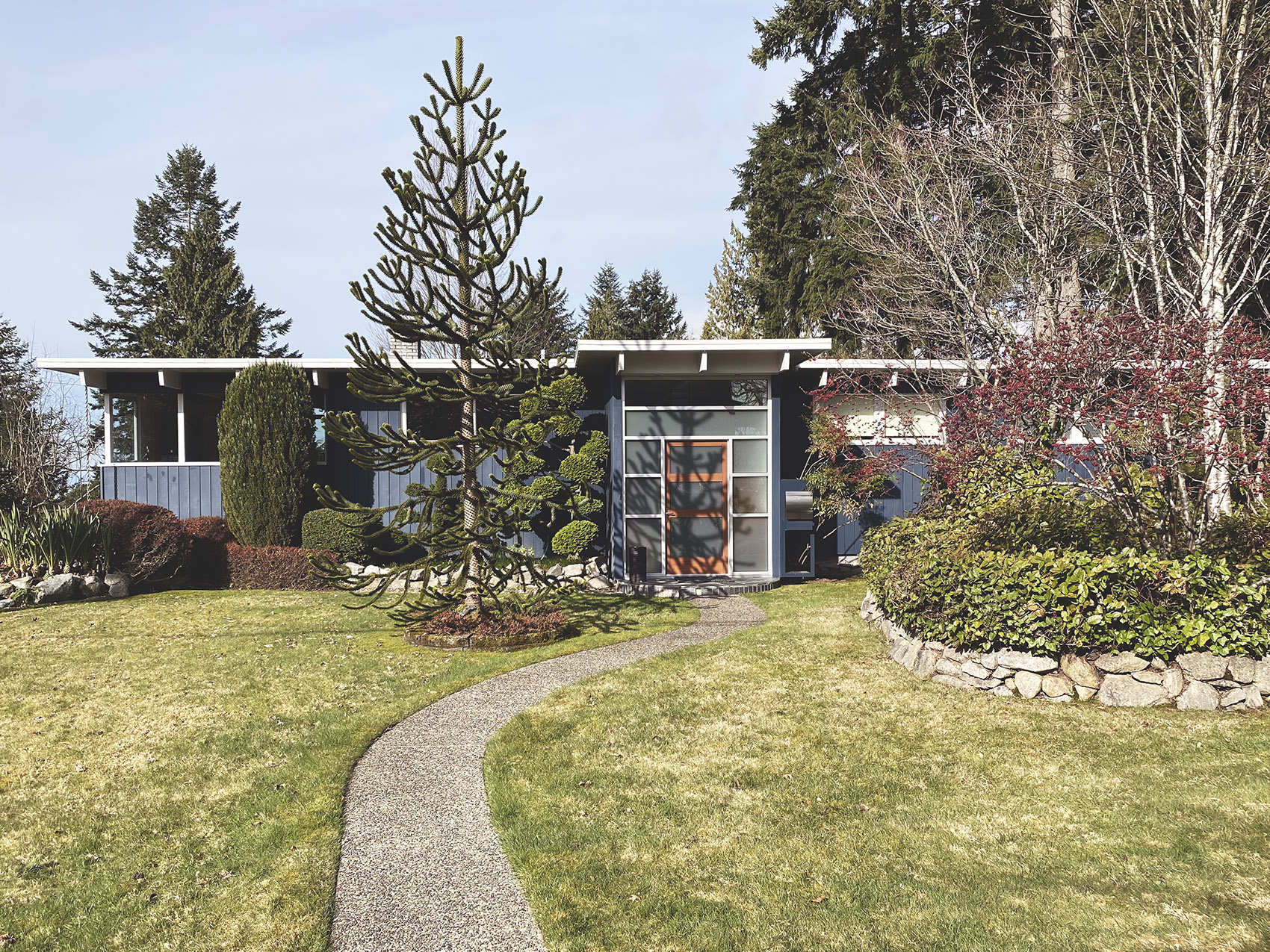
The longevity of these modern homes, the majority of which are still being lived in today, including some of their original owners, speaks to the liveability of their spaces and the efficiency and adaptability of the structures for families of a variety of sizes. Of the 750 homes catalogued to date, 80% are still standing, and countless of them have undergone varying degrees of renovation, addition, or alteration. Of the 317 homes listed in the West Vancouver Survey of Significant Architecture, 114 were designed and built by Lewis Construction, a testament to the fact that Bob Lewis tapped into a mainstream yearning for a modern way of living, and a popularity brought about by the simple use of materials, connection to nature, and cost-effectiveness for the average family. Bob Lewis’ impact cannot be overstated.
Over the course of their time at the helm of Lewis Construction, Bob and Evelyn would relocate their family on numerous occasions to homes of their own creation, in the hopes of testing out the liveability of their new designs. The family is said to have approached these moves with excitement. And, with the success of the company came expansion, not only including a full engineering staff, but also eventually growing into a vertically integrated realty company. Records indicate that Bob Lewis retired in 1975, and that he passed away in April 1987. Evelyn Lewis later died in 2008 at the age of 89. While Lewis Construction ceased operations nearly 40 years ago, there continues an immense impact on our built environment and on future generations of families who seek an economical and modern way of living.
- [1] Family of Bob Lewis (2022). Interview with Jennifer Clay.
- [2] A Survey of Residential Post-and-Beam Construction in Greater Vancouver, 1957-58. V.F. Lyman. May 1959. National Research Council Division of Building Research.
- [3] West Vancouver Survey of Significant Architecture 1945-1975. F.G. Architecture & Planning Consultants, 1994.
- [4] West Vancouver Community Heritage Register.
A Prolific Builder with an Enduring Legacy
Our ongoing research has taken us to a broad array of Lewis’ modern houses, from the near original to the nearly unrecognizable, from minor alterations to imaginative transformations. Each home, even when built of the same construction typology, has taken on an identity of its own, reflective of those who have lived in them.
Houses were not the only structures that Bob Lewis built, but they certainly make up the bulk of his body of work. To date, the League with North Shore Heritage have catalogued over 750 buildings, predominantly homes, built by Lewis Construction. Much of this work took place on the North Shore, with over 425+ in West Vancouver and another 140+ in North Vancouver. His homes can also be found in municipalities across the southern coastal regions and into the interior of British Columbia. Thankfully, by our assessment, 80% of his houses are still standing, a testament to their longevity and adaptiveness to contemporary living.
Project Publications
- ‘Brutalist’ Bob Lewis home lists for $2.8M in West Vancouver. Nick Laba. December 28, 2023. North Shore News.
- Lewis through the decades. Jennifer Clay. June 29, 2023. North Shore Heritage.
- Modern West Coast Places: Bob Lewis
- What you should know about Bob Lewis, the prolific builder of West Coast Modern homes. Nick Laba. December 8, 2022. North Shore News.
- My Bob Lewis Odyssey. Jennifer Clay. October 1, 2021. North Shore Heritage.
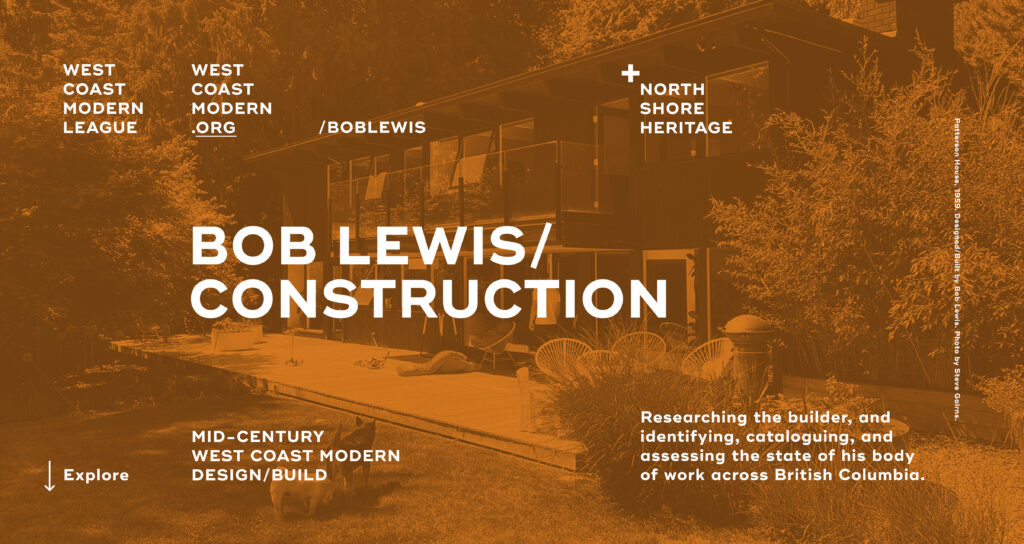
Steve Gairns of the West Coast Modern League with Jennifer Clay of North Shore Heritage are working to identify, catalogue, and assess the state of Bob Lewis’ body of work across British Columbia. Very little has been published about Bob Lewis over the years, yet among architectural circles he has a cult following. To date, the team has identified over 750 homes, primarily across the southern coastal areas of British Columbia, along with a few in some unexpected places, and are meeting with homeowners, touring and documenting these residences, to learn more about the man, the people who commissioned his homes, and the built legacy that he left behind.
If you live or grew up in a home designed and built by Lewis Construction, we want to hear from you. Please contact us via email at [email protected] or fill out the contact form.
